September 16, 2018
The goldenrod is folding. The asters are beginning to take over. I always look to the asters to bring in some bees, a few wasps, and a LOT of Hover Flies. Not just yet, but look at this pink. A very very few wild grapes survived the predators all over the place - less than very few ever make it to the berries. The asters next to the pond dip in to say hello to the beautiful water lily! All those colors competing and making a glorious quilt in their determination!
Martha O'Kennon
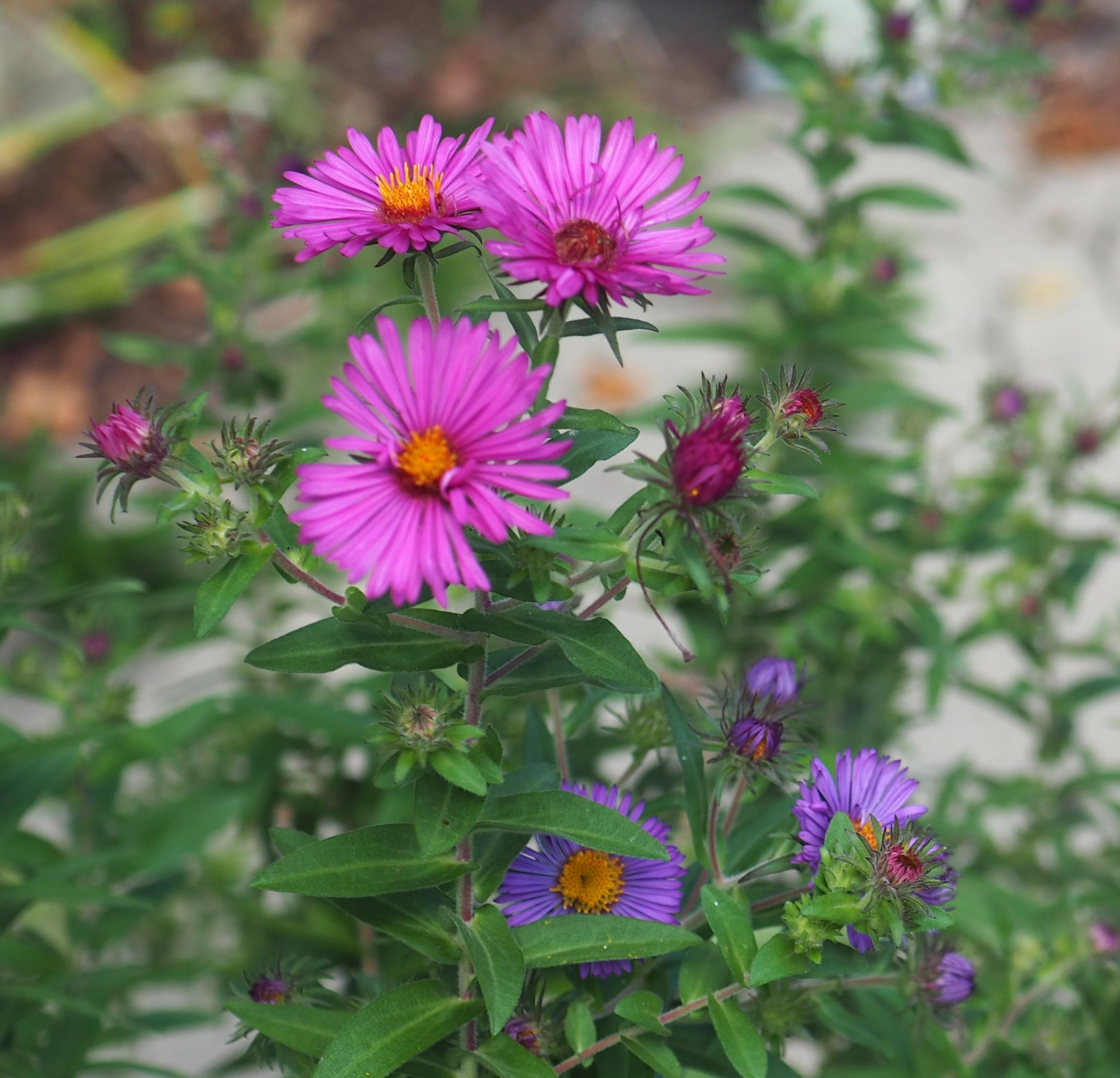
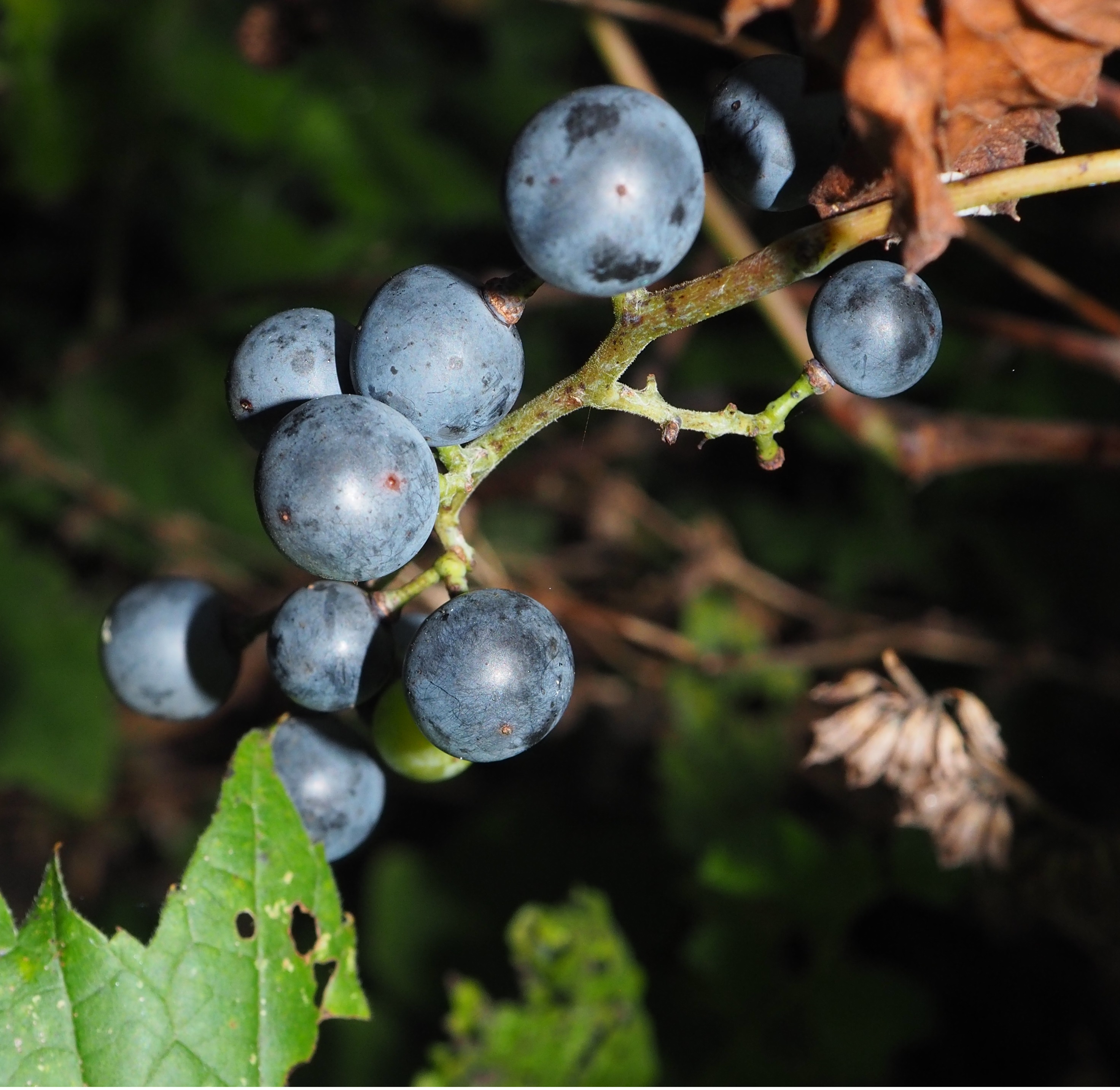
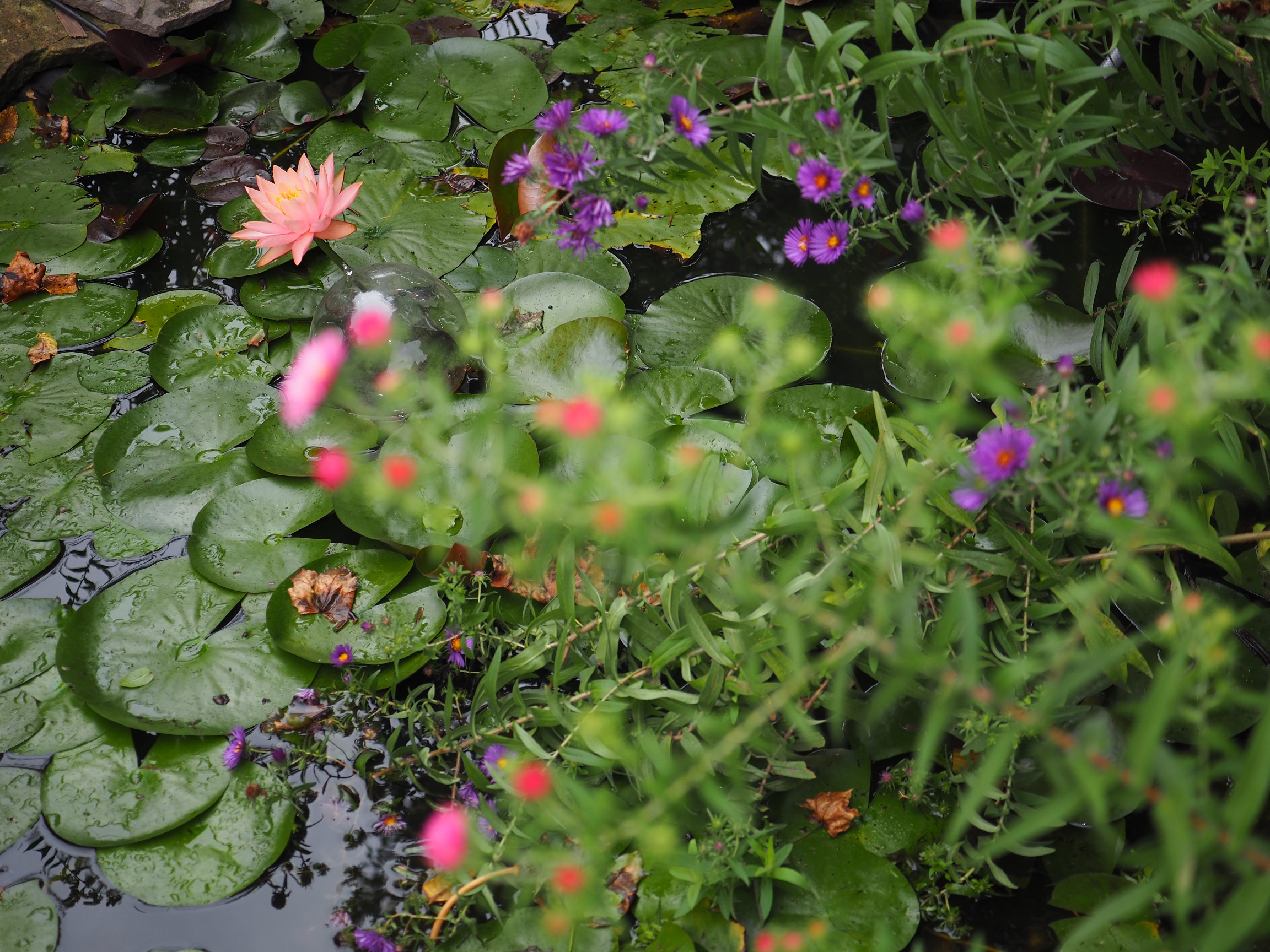
Remember that there is information in the name of the file for each image. You can see it by mousing over the image - look at the lower left of the screen. Or you can click on the image to get to the (usually) larger image. Then the info is displayed in the address line above. Sometimes the second click will actually display a different view of the original image.
First up, an ant, or is it? An ant with an ovipositor? I'd say it is probably a braconid or ichneumonoid wasp. Unless someone has found an ovipositor-swinging ant. Remember this is our planet, and stranger things are uncovered daily! So I DON'T have any ant pics for this week. But a few barklice showed up. This lovely one is Polypsocus corruptus. In the last image, look at the stitching patterns on the wings.



Oh the sweet little bees. I just can't seem to wrap my head around their names. So first up, we have a lovely little bee. Second, I CAN identify - it's our dear little Honey Bee on the middle of a head of Autum Joy Sedum.. The small Bumble Bee is joined by another tiny bee on the baby pink aster. I must remember to record the face for my face collection of bees and wasps.

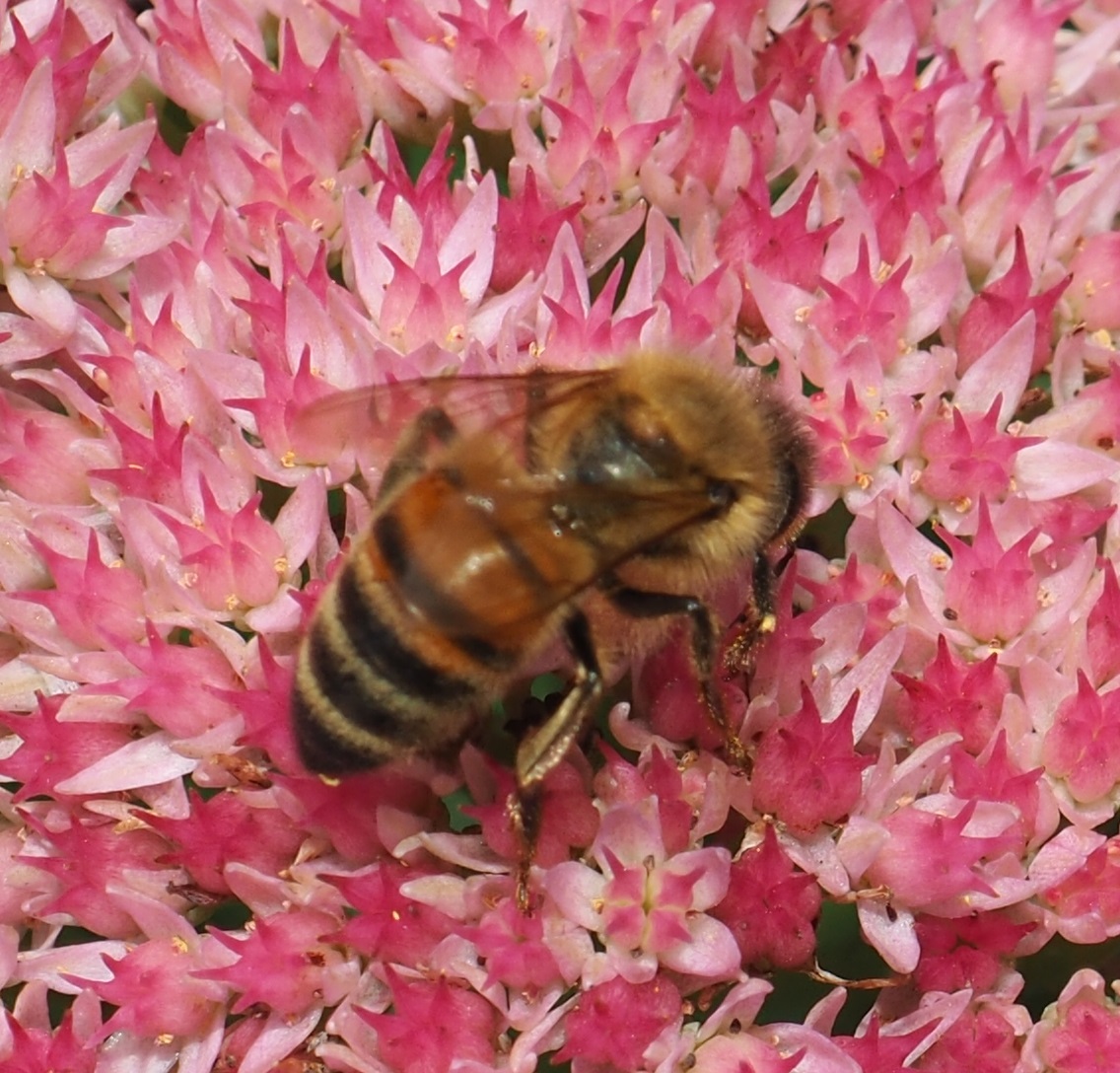
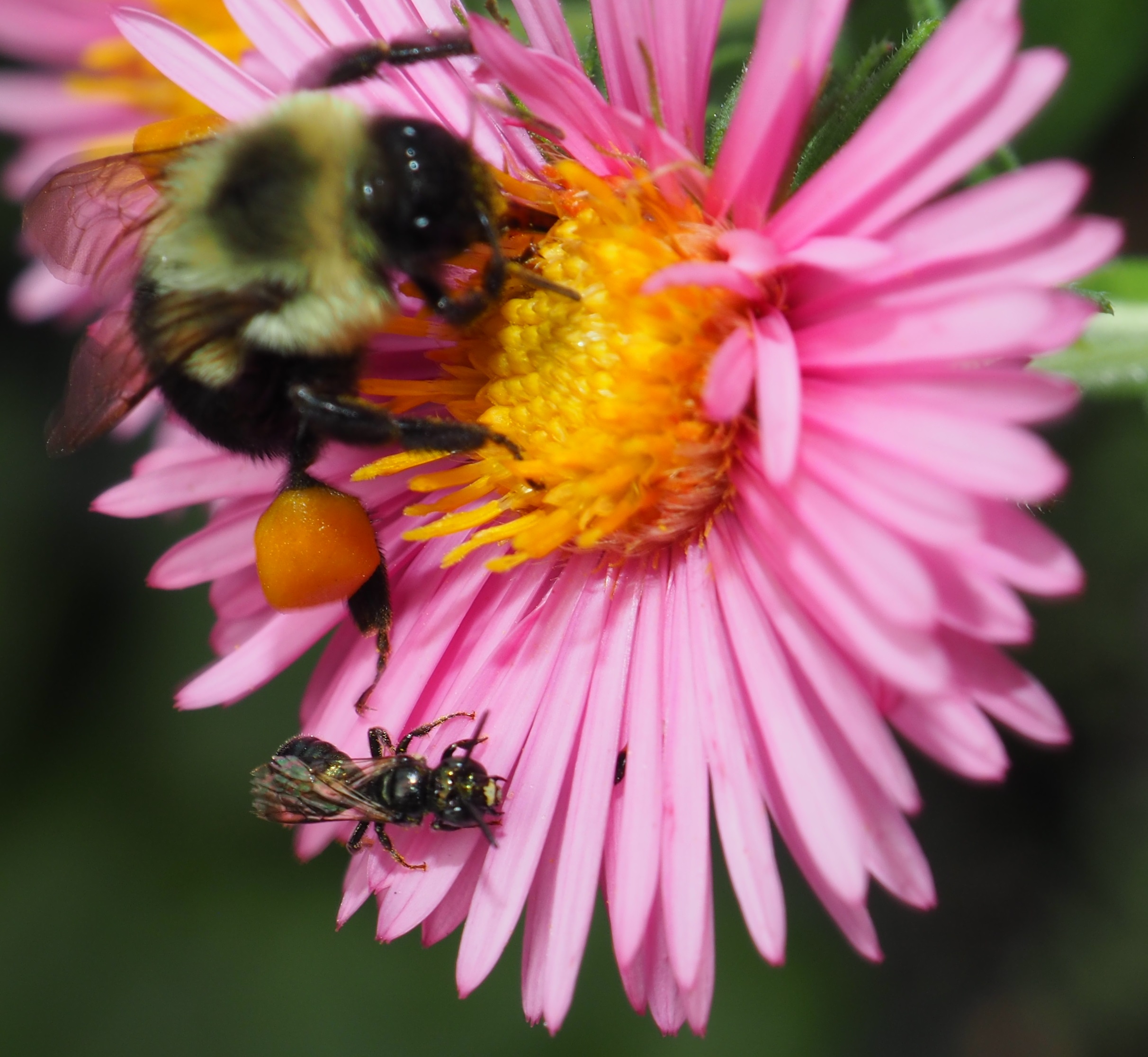
Here is one bee that doesn't make honey but still manages to do about 20 times the amount of pollinating! See how the pollen is gathered on its sticky abdomen instead of its legs. Number 2 is a ventral view of an unknown bee. Third may be the Eastern Common Bumblebee. And the anonymous #4 has a mirror of a face.
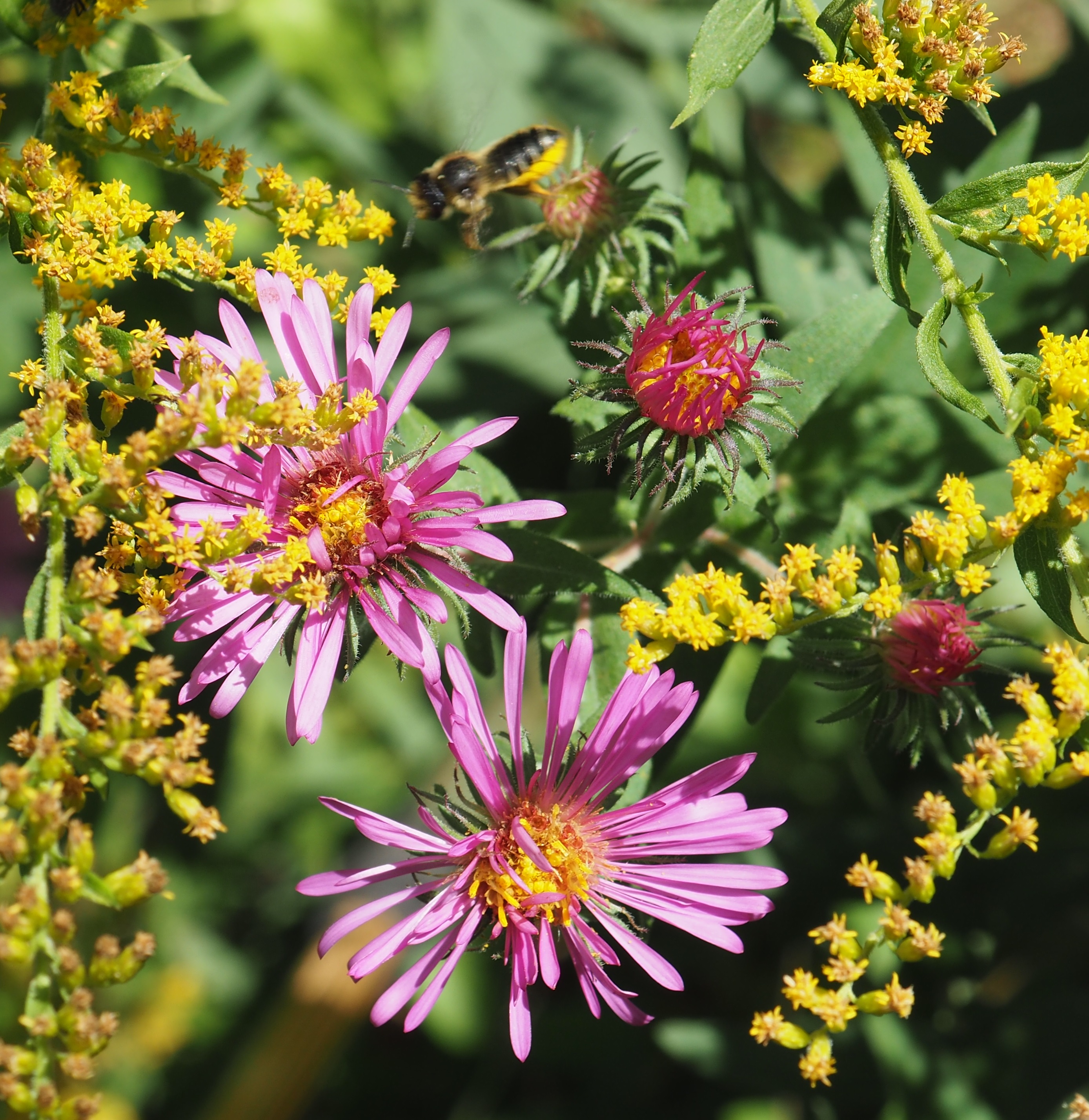
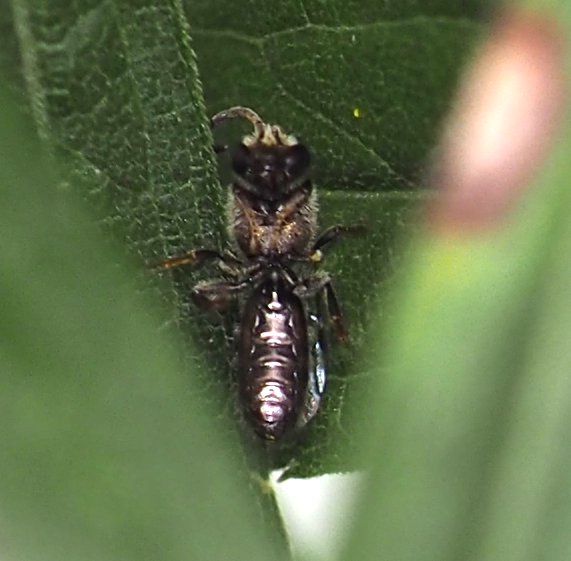
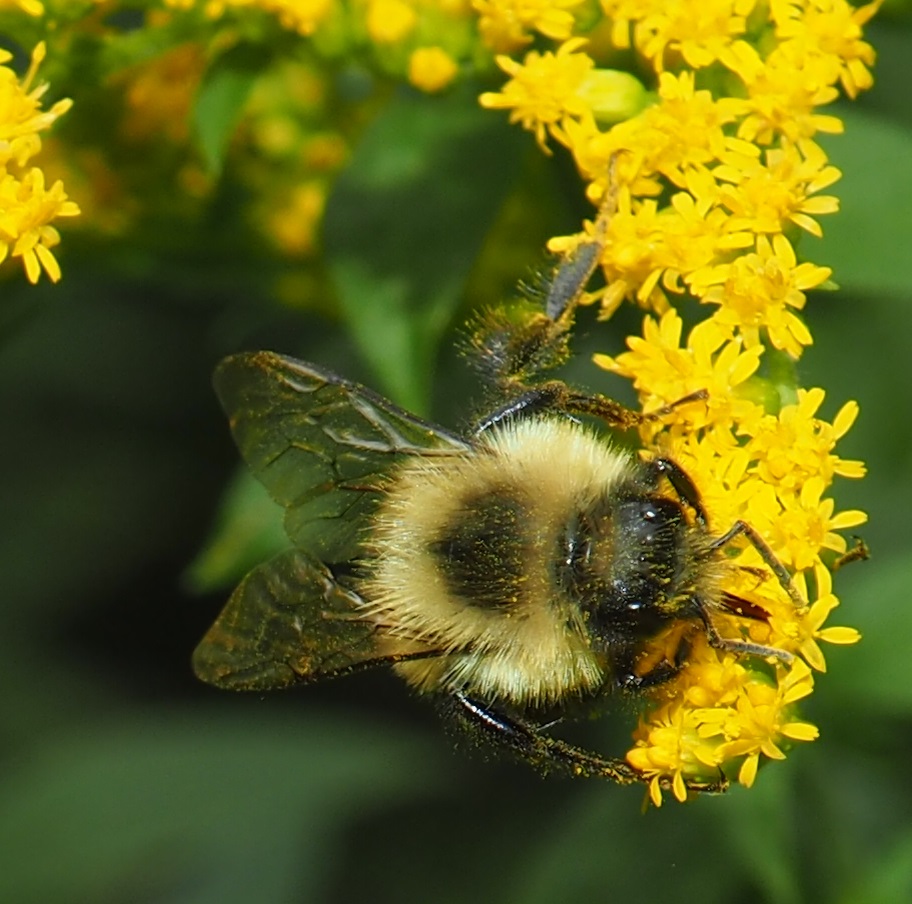
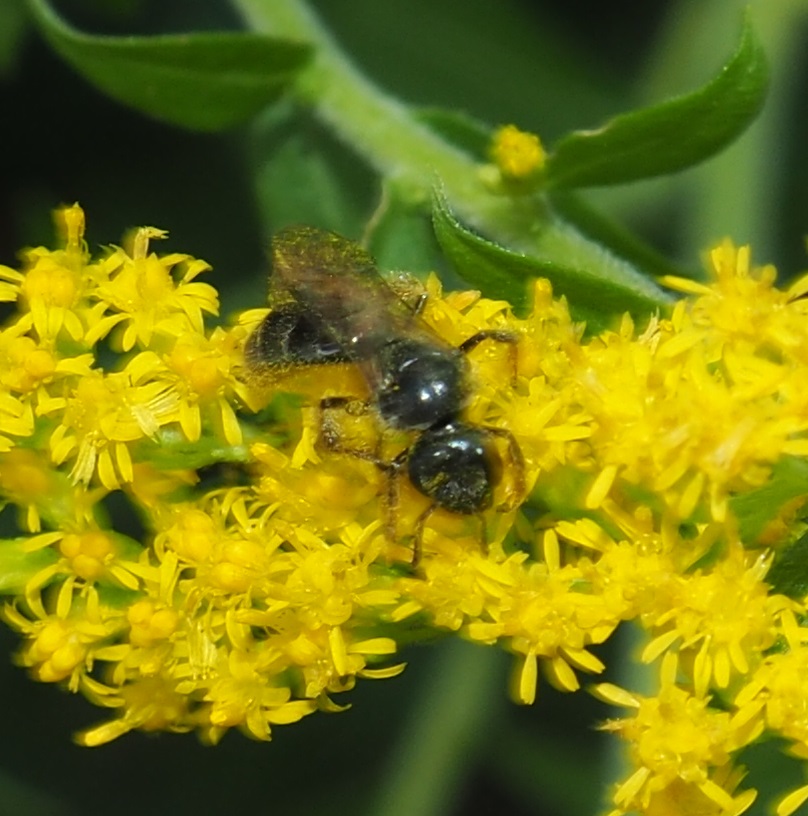
We start off with an Asian Lady Beetle, and then one of a different color. Then quite a frequent flyer, the Locust Borer Beetle.

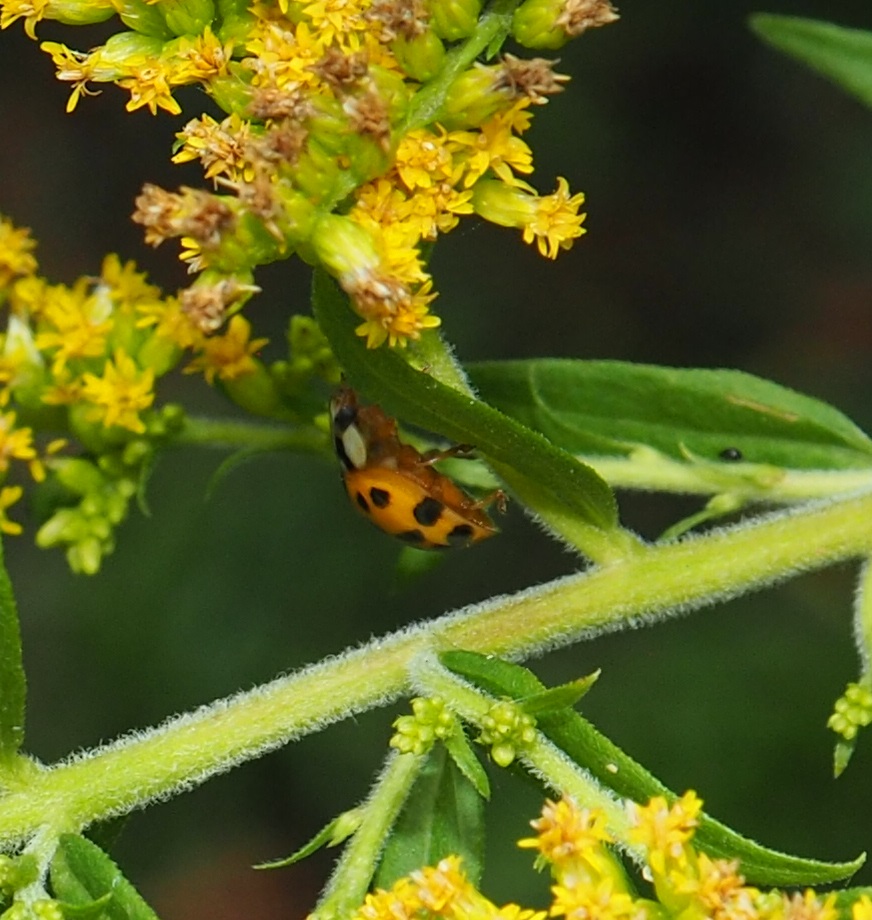
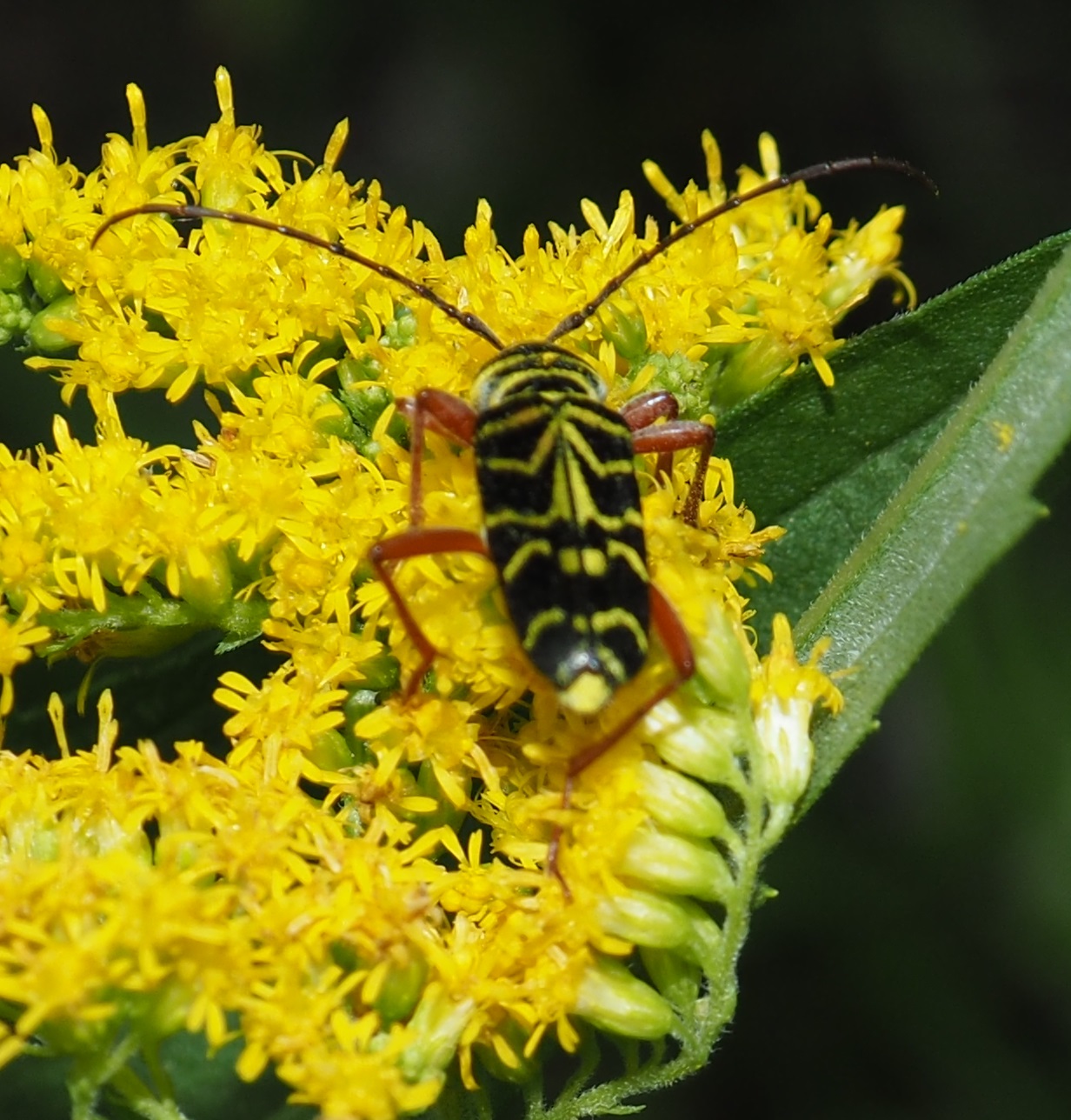
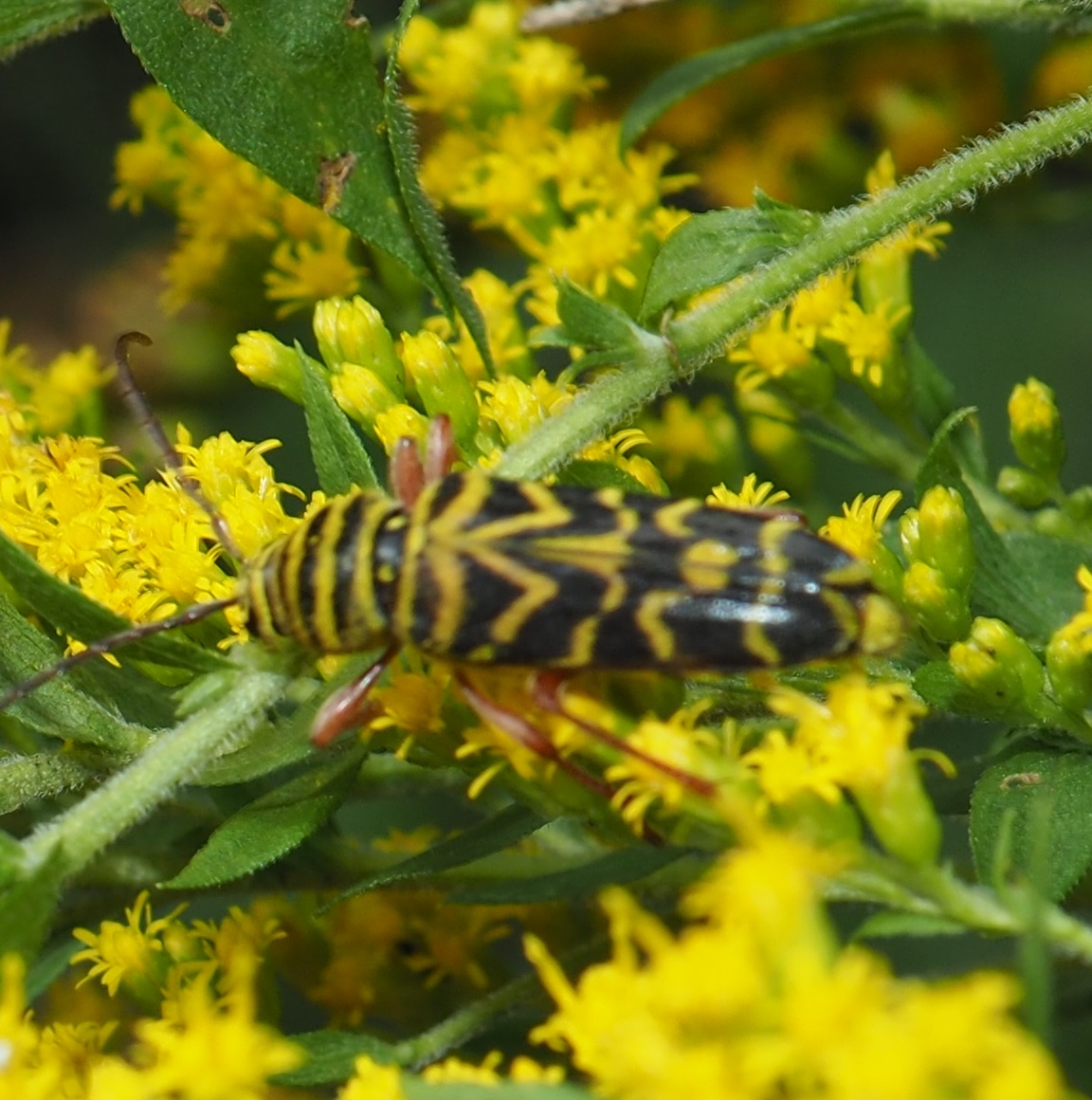
Every year since I've been noticing them, the glorious black- and yellow-patterned beetles that usually mate on camera this month. In #3 you can see the pattern when it is standing still. Fourth is a good old faithful Redbud Bruchid. And fifth I was trying to decide between Fly or Beetle

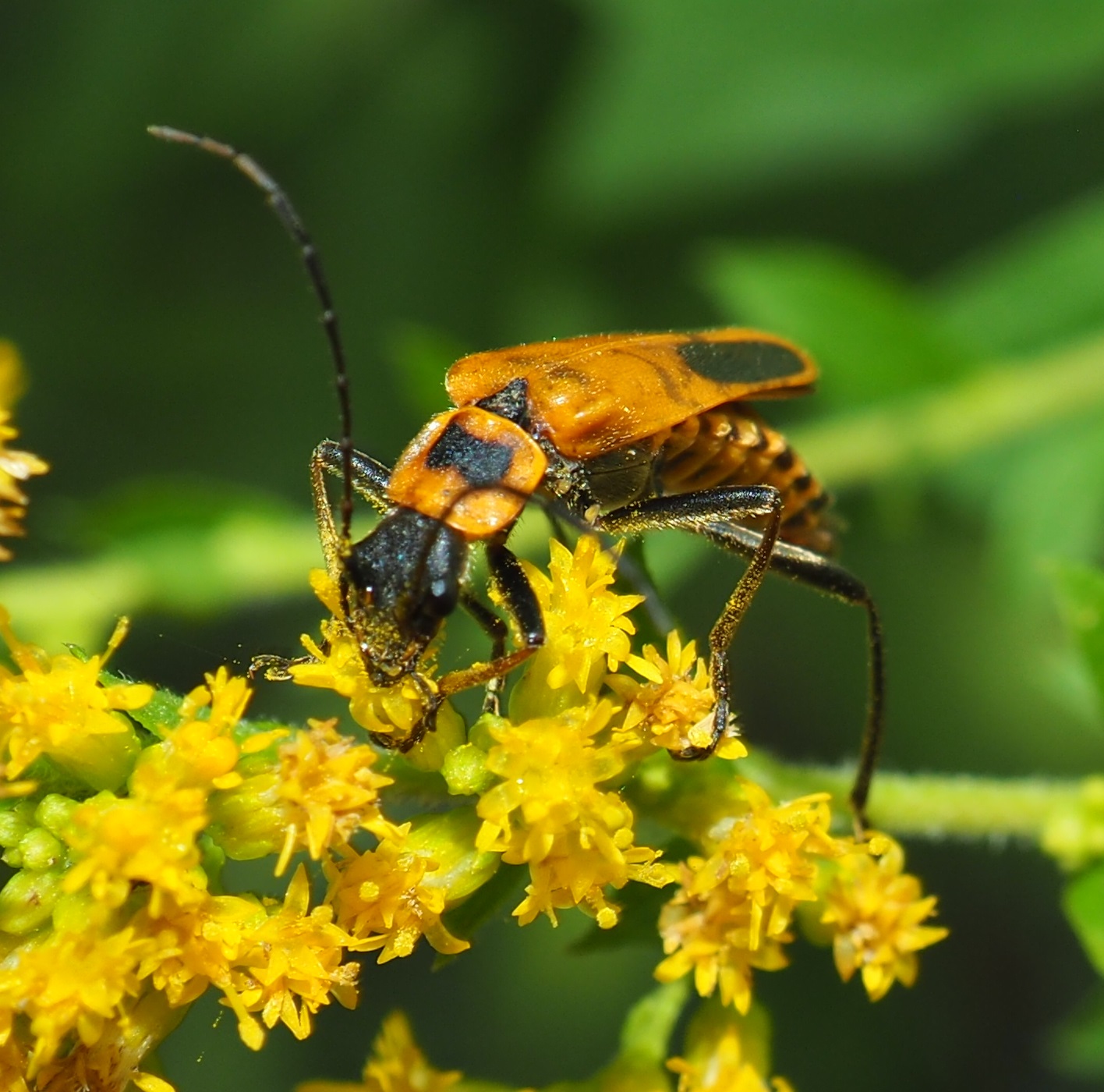
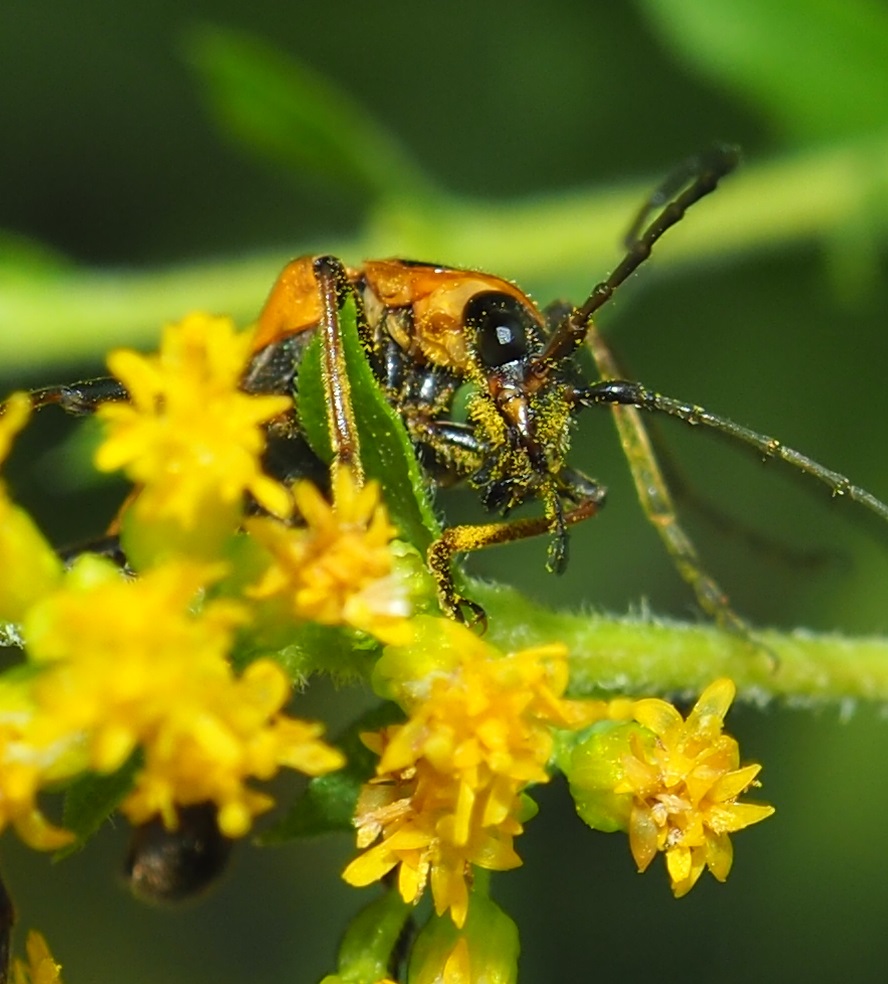

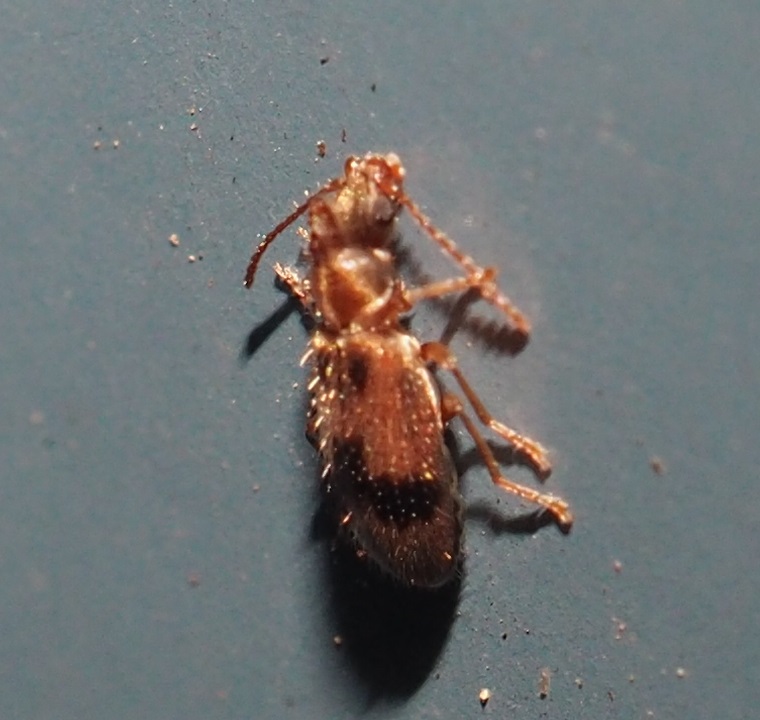
Well, we seem to have landed in Bug Land. First up is a nice black male Ambush Bug. hefty forearm - good for grasping or crushing, whichever you need done. The one with more colors is the female - I stole this picture from last week since it is a better shot. Third is an Assassin Bug. Never want to see a tussle between those two kinds of killers (Assassin Bugs and Ambush Bugs). I hear that each of them is capable of injecting a toxic chemical, even though they are happy to avoid us. Usually I see a couple or more pairs of these Ambush Bugs mating. This year I found 4 + of the males, rarely a female, and hope they got together. The rain and darkness alternated for several days during the potential mating period. There are still lots of young Assassin Bugs out there. Haven't seen an older instar for a long time.
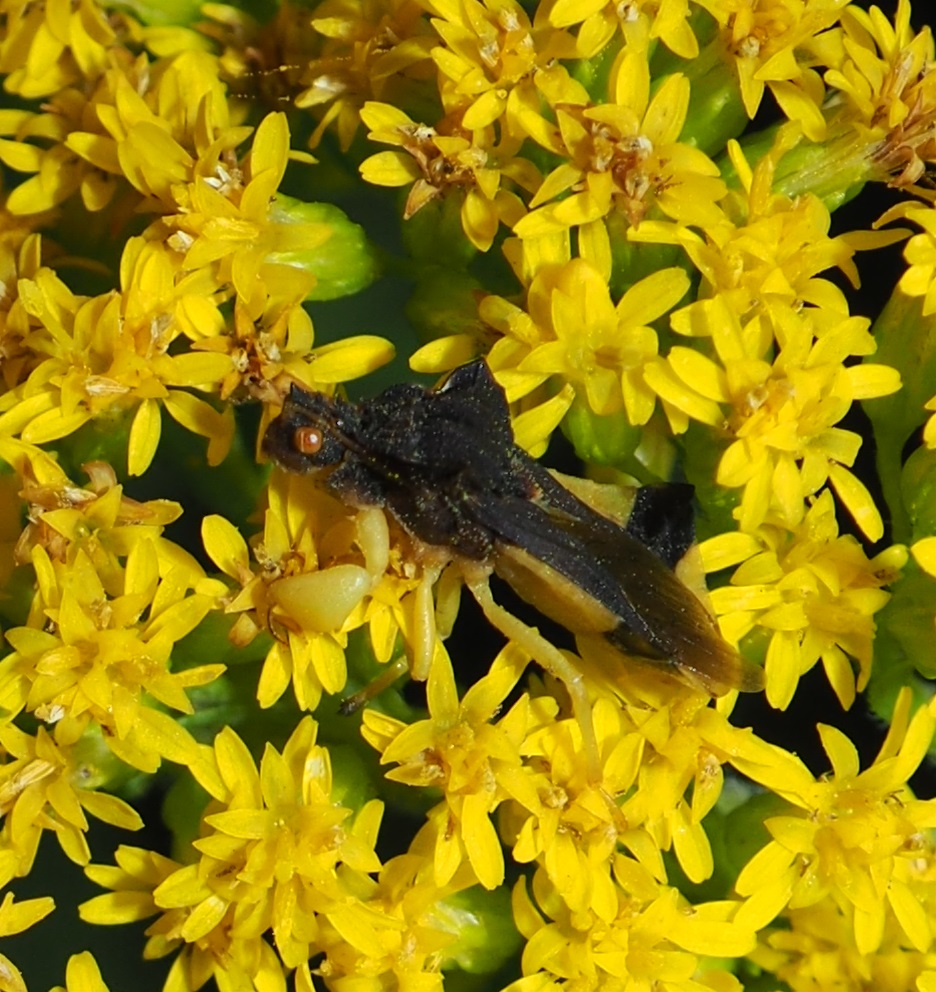
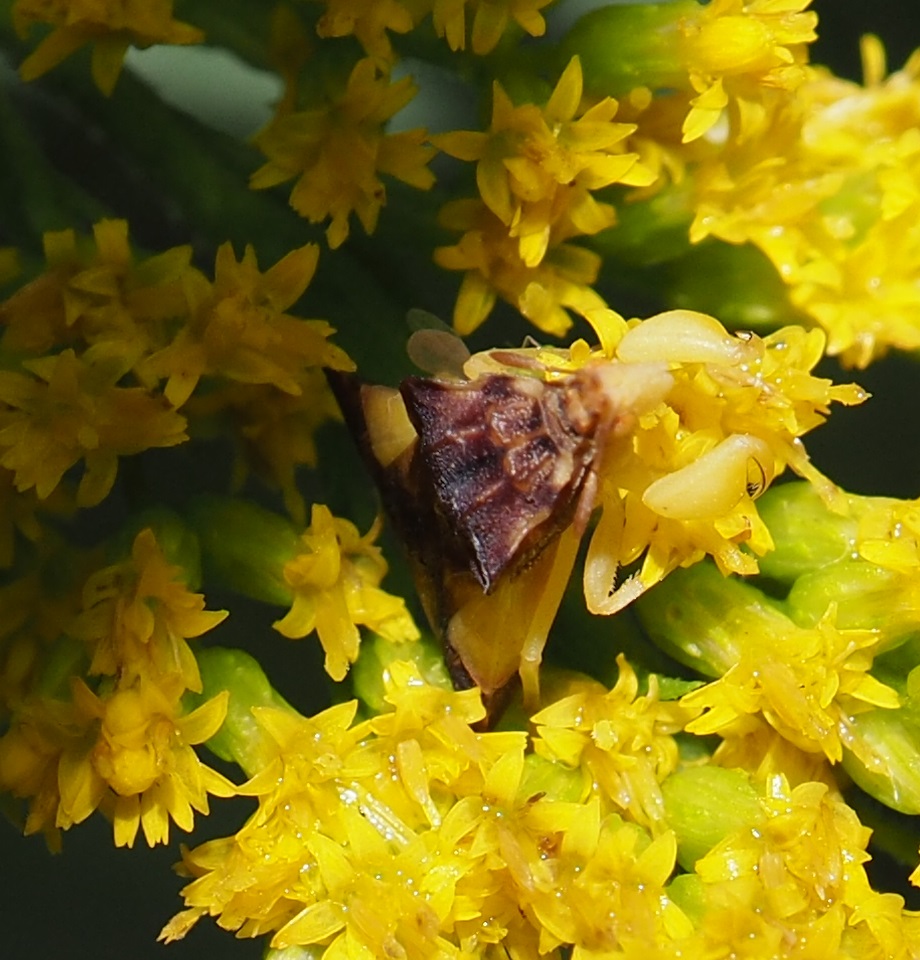
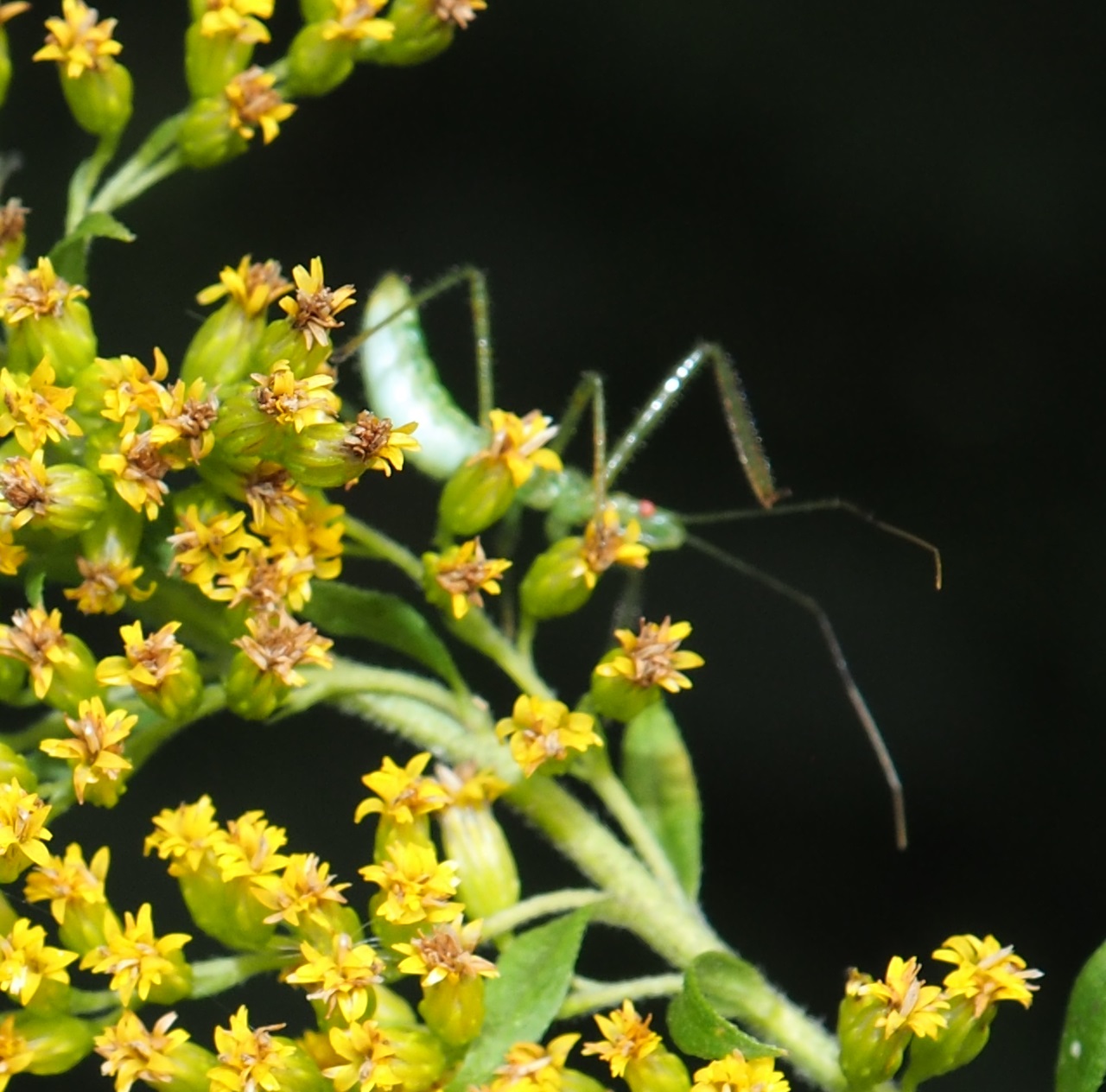
Here are two leafhoppers, assuming the first one actually has a good shot of the poison, I hear that if this Ambush Bug actually gets into a dispute with a human, the human would wish the injection contained some painkillers. The first is still not identified (by me).. However the second one has been identified by a couple of people as Scaphoideus pullus. I'm as sure as I know how to be that that is the correct name. And, strangely, these were the only leafhoppers I saw this week. The third is either a leafhopper or a Sharpshooter, depending on whether or not those rear legs are spiky. Make sure to click or click twice on Mr. Alligator to see the handsome baroque patterning. This one made the largest impression of the week. Last here is a Plant Bug, maybe even a Lygus Bug.

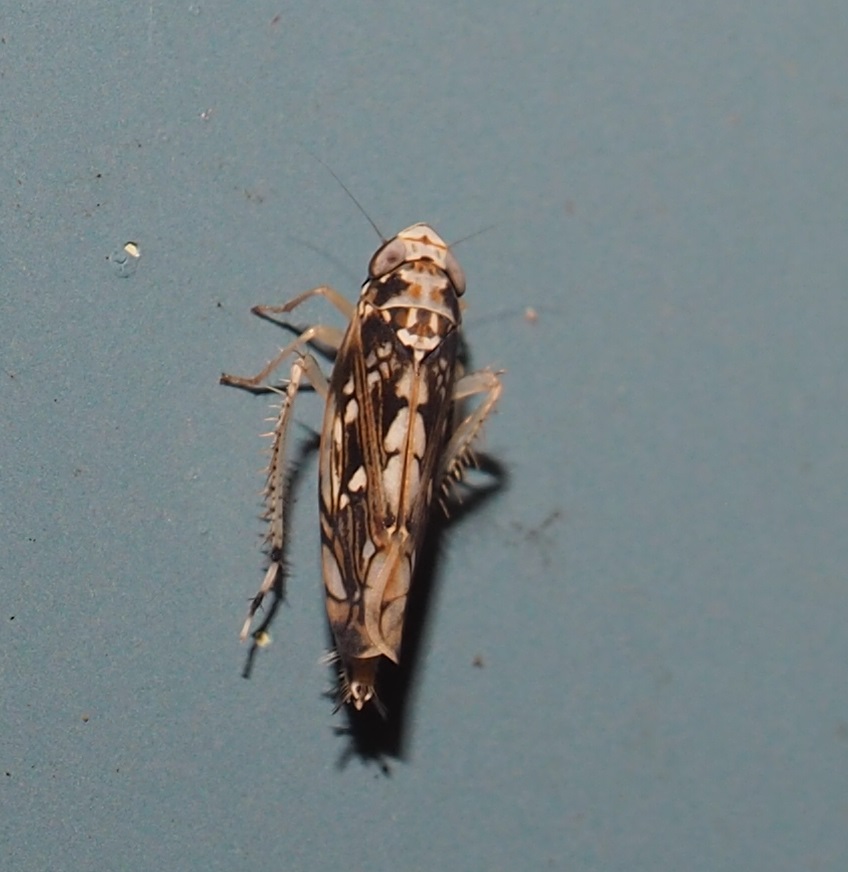

 9 12 18 1a.jpg)
The next three are BMSB in a late instar. Sorry to say since they are such really handsome bugs. The fourth is probably NOT a BMSB since its white antennal segment is not the end segment.



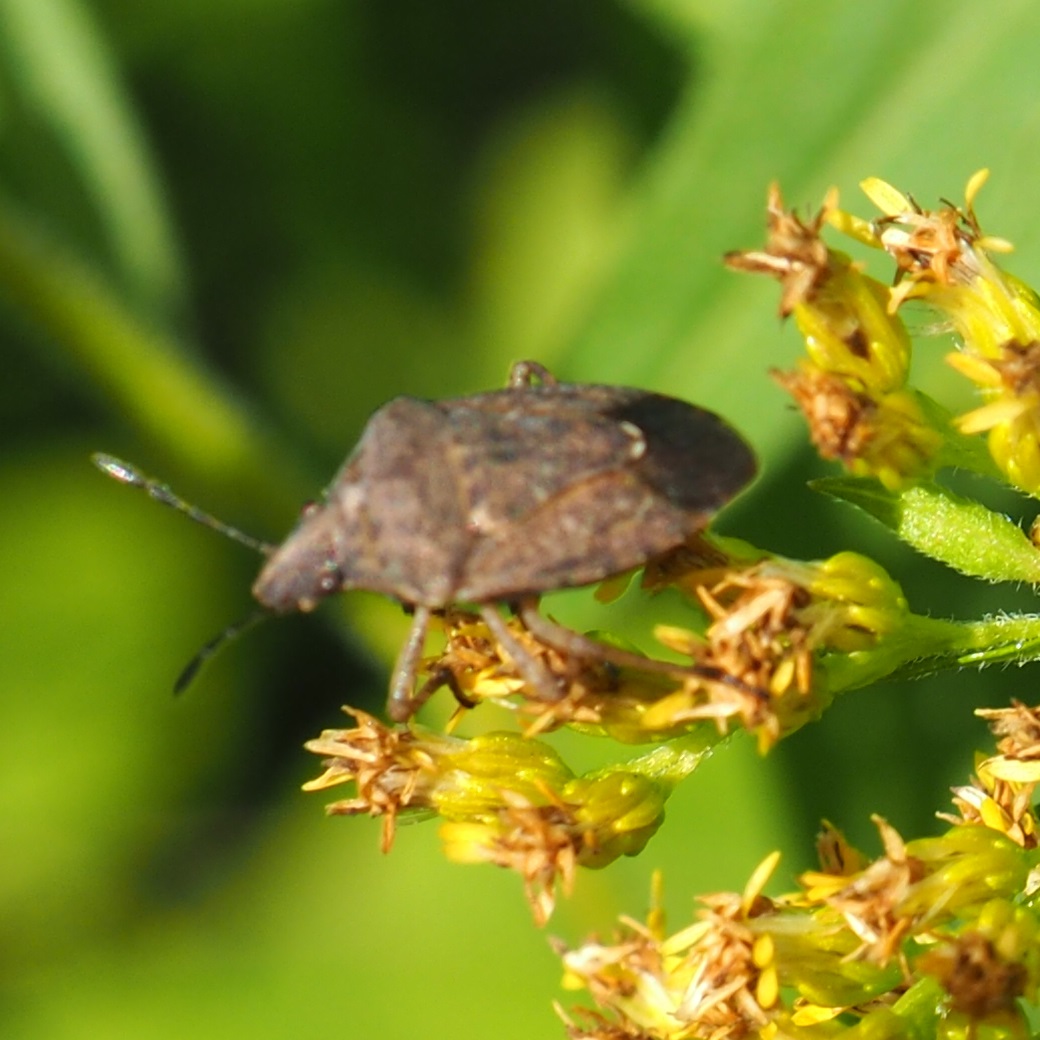 Let's finally move on to see some of the fly community. The goldenrod has attracted such a crop of tiny flies I'll probably never get all the ones that come to visit.
Let's finally move on to see some of the fly community. The goldenrod has attracted such a crop of tiny flies I'll probably never get all the ones that come to visit.
Quantity-wise, the Whiteflies surely were the largest grouping. They seemed to particularly like the Weeping Redbud leaves. In #2, the stripes under the wings resemble those of a Hover Fly, perhaps T. Eupeodes. I don't know exactly to say about this Brown and Tofu fly.
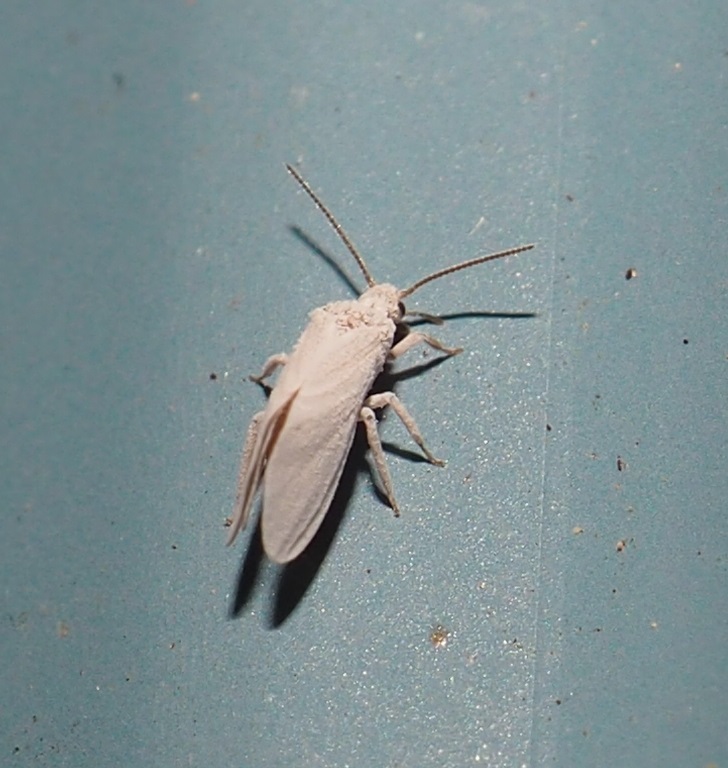



Here, I believe, are two photos of a fat long-legged fly, which is probably a gall midge. This is followed by a large green-bottle fly hidden between two goldenrod spikes.

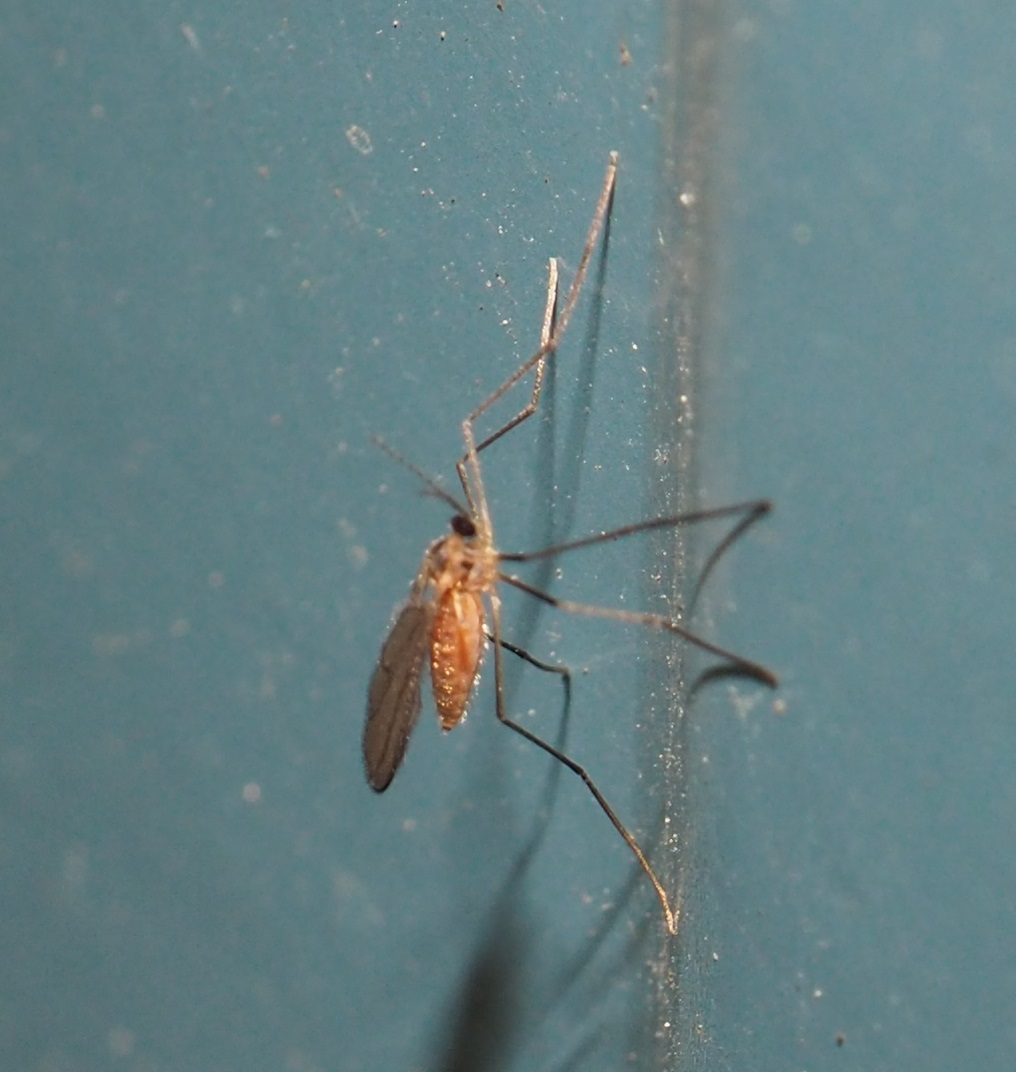
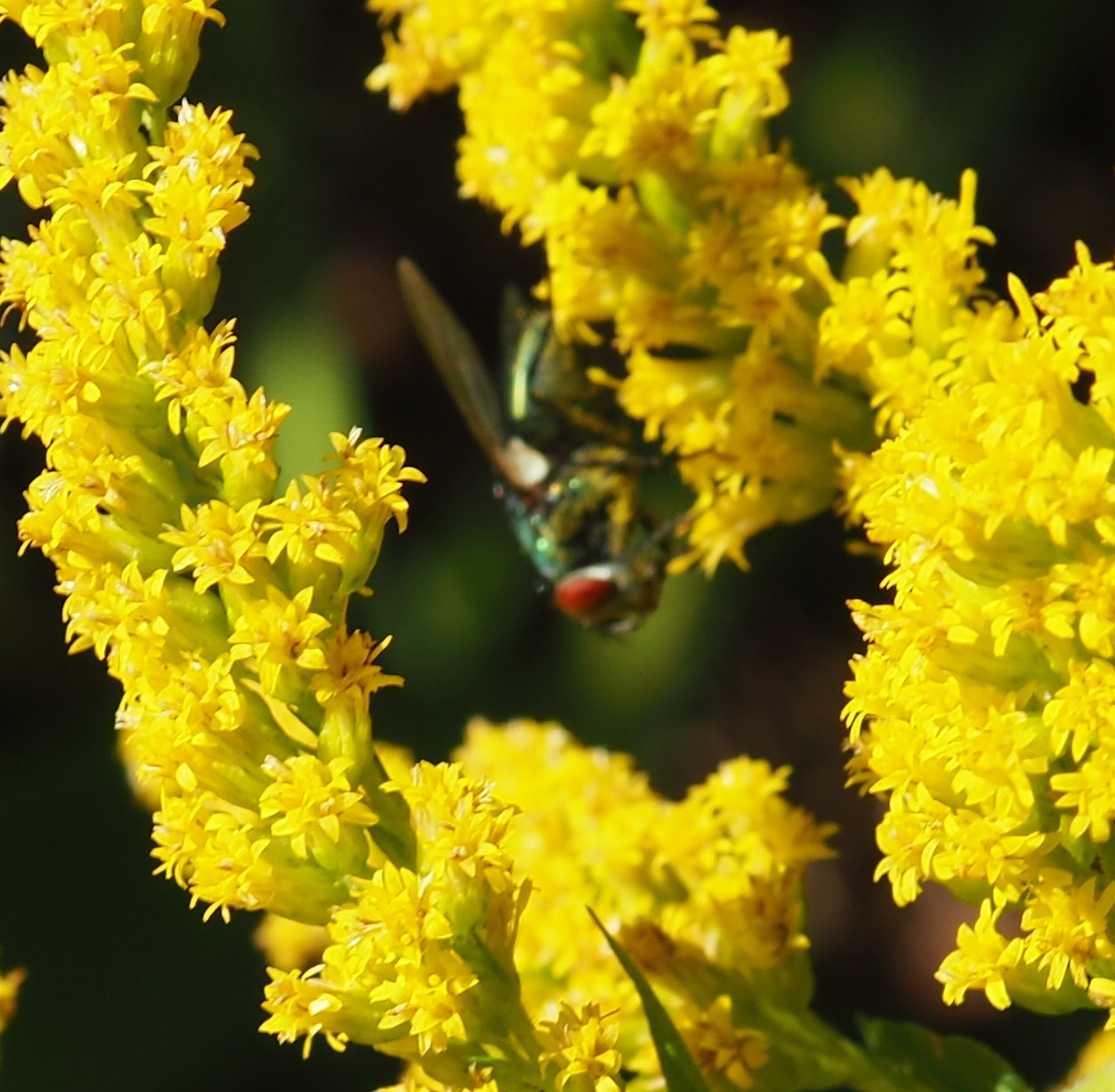
Here are a few Hover Flies: This very utilitarian striped fly is probably of the genus Eupeodes. The very small fly is probably Toxomerus marginatus. These very small ones dodge the camera but then apparently are worn down and once they light comfortably they will wait till you have at least one ticket.
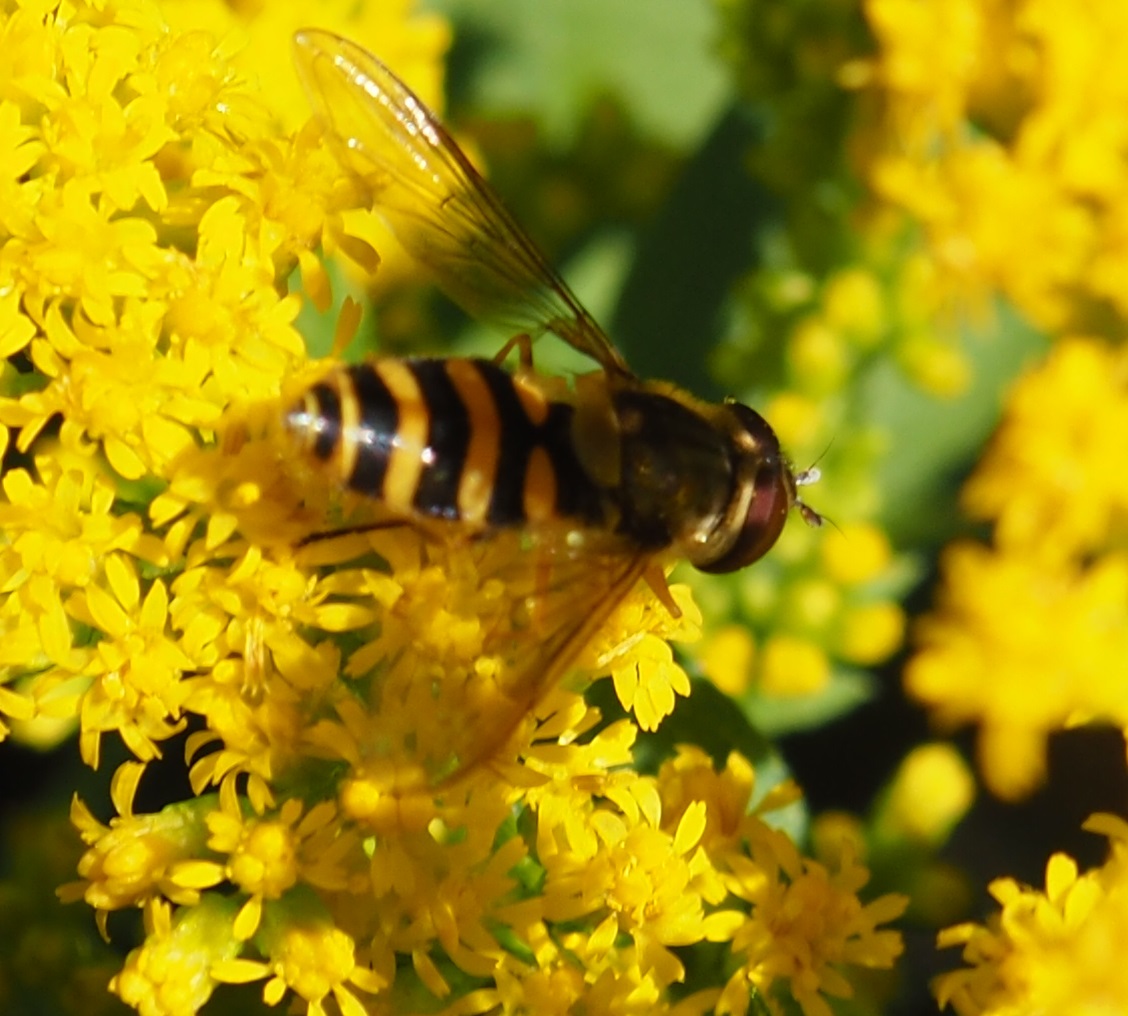
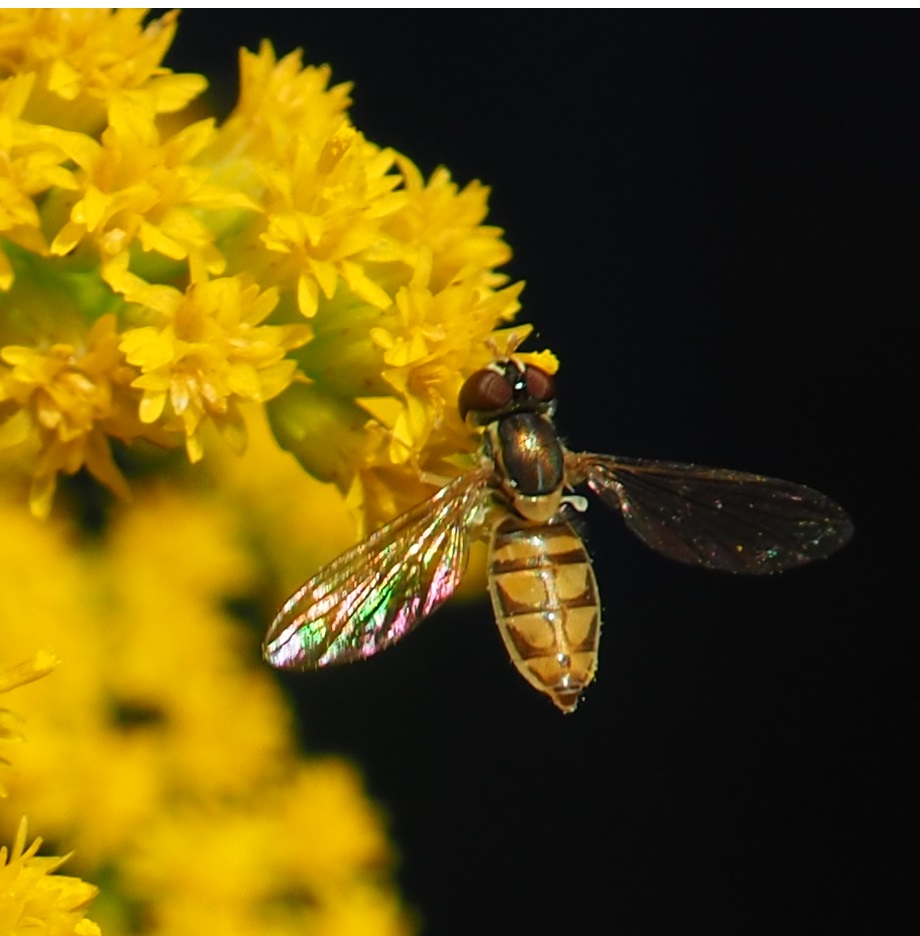
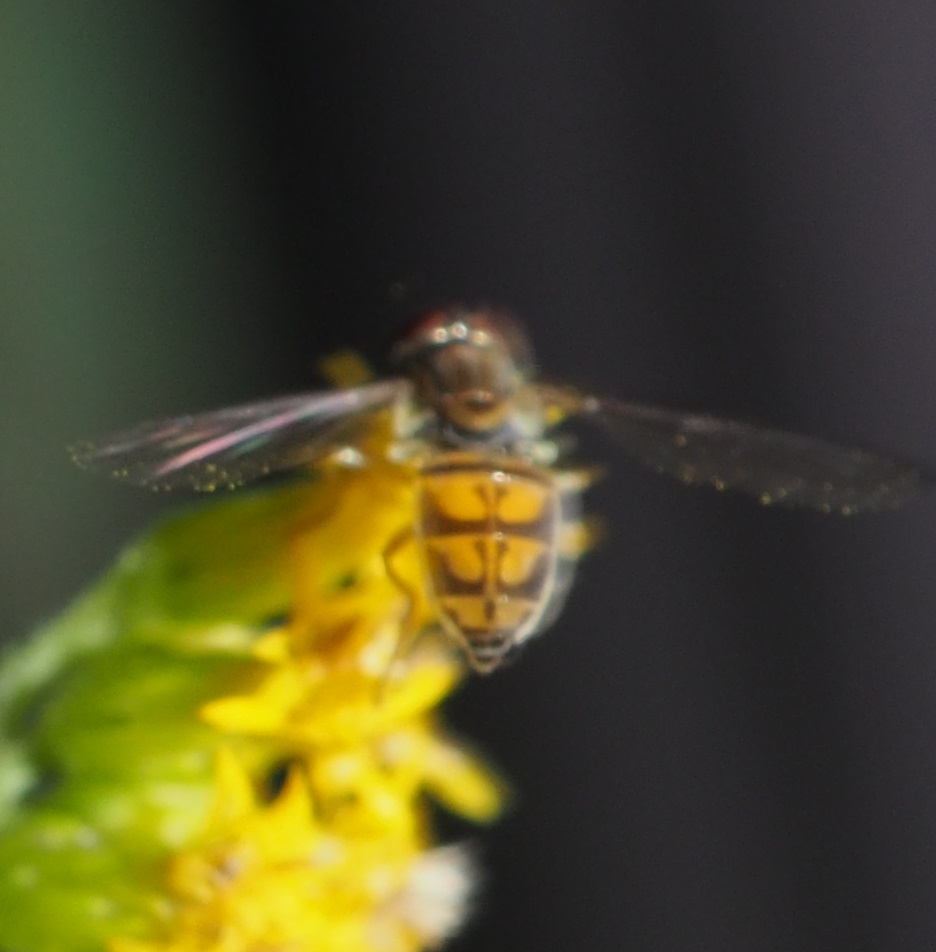

Here's a well-fed mosquito, most likely full of good 'ol O+. Didn't really feel it - it should get a job as allergy-shot administrator. Hi Michelle! Next is a sleek Moth Fly. Next is a red-eyed fly hurtling past a couple of bright purple asters. And last is a flesh-eating fly in its even and odd bright black and white wing patterns.
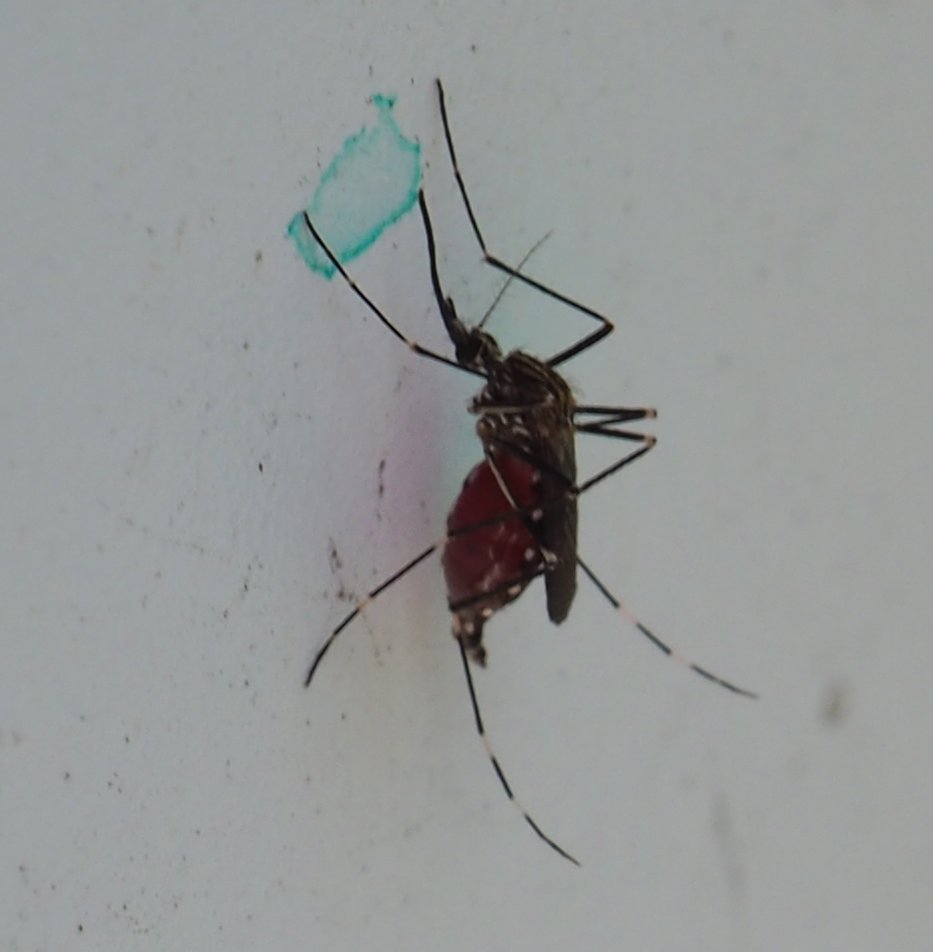
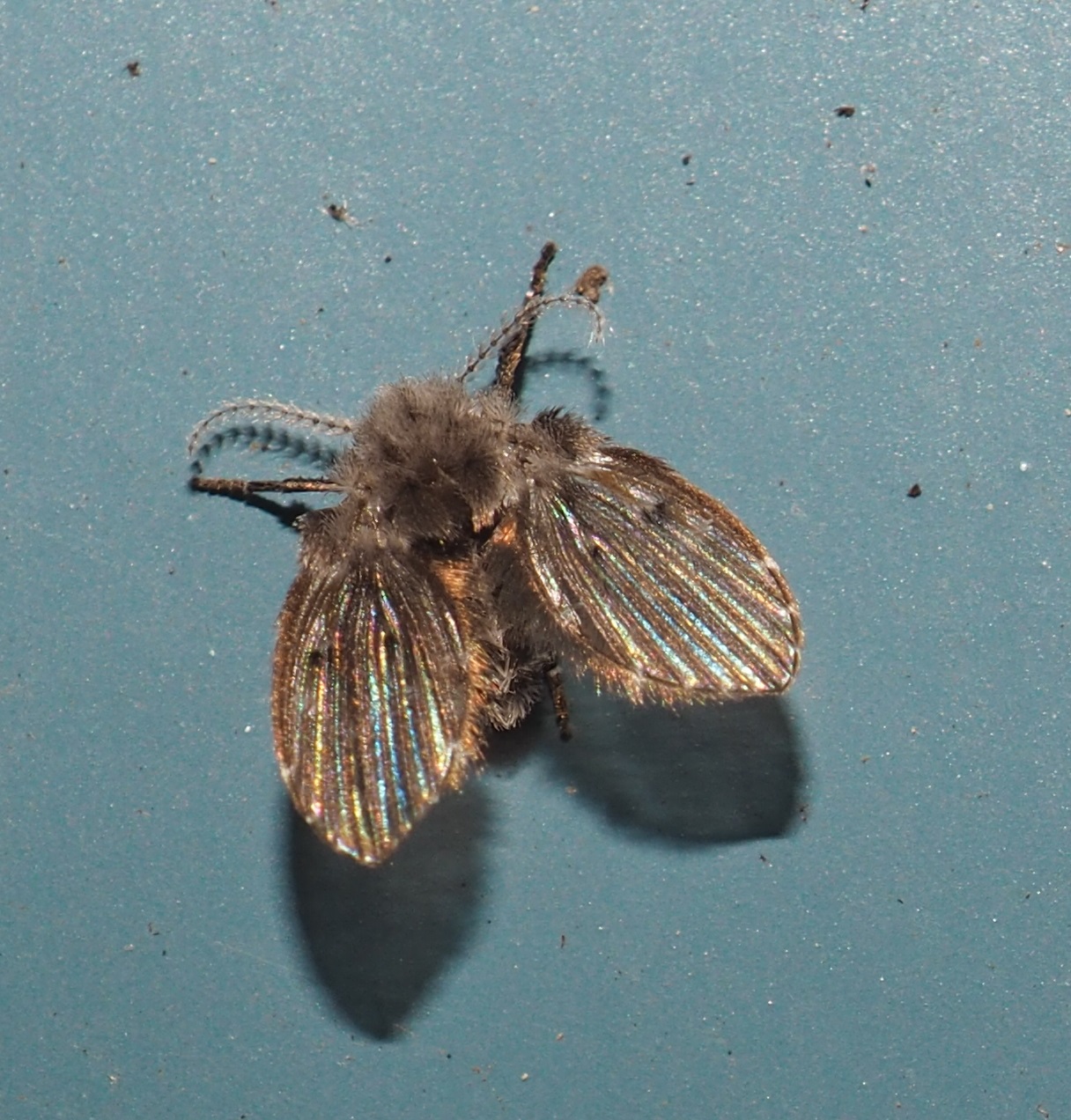
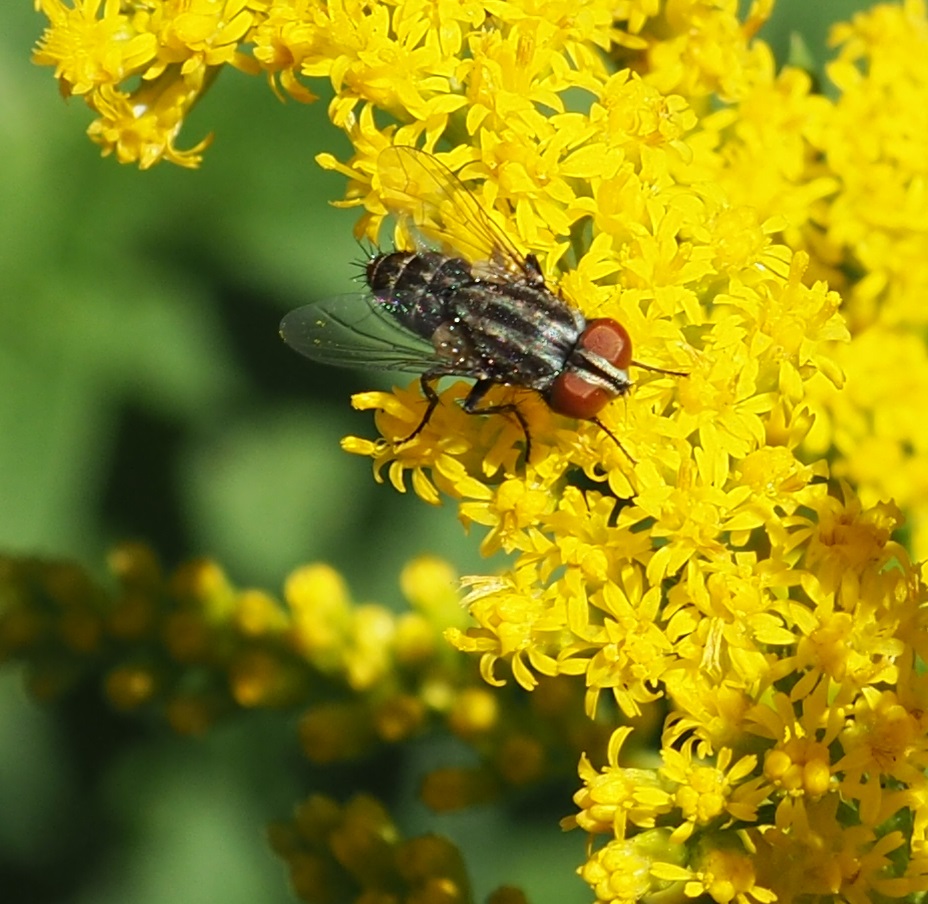
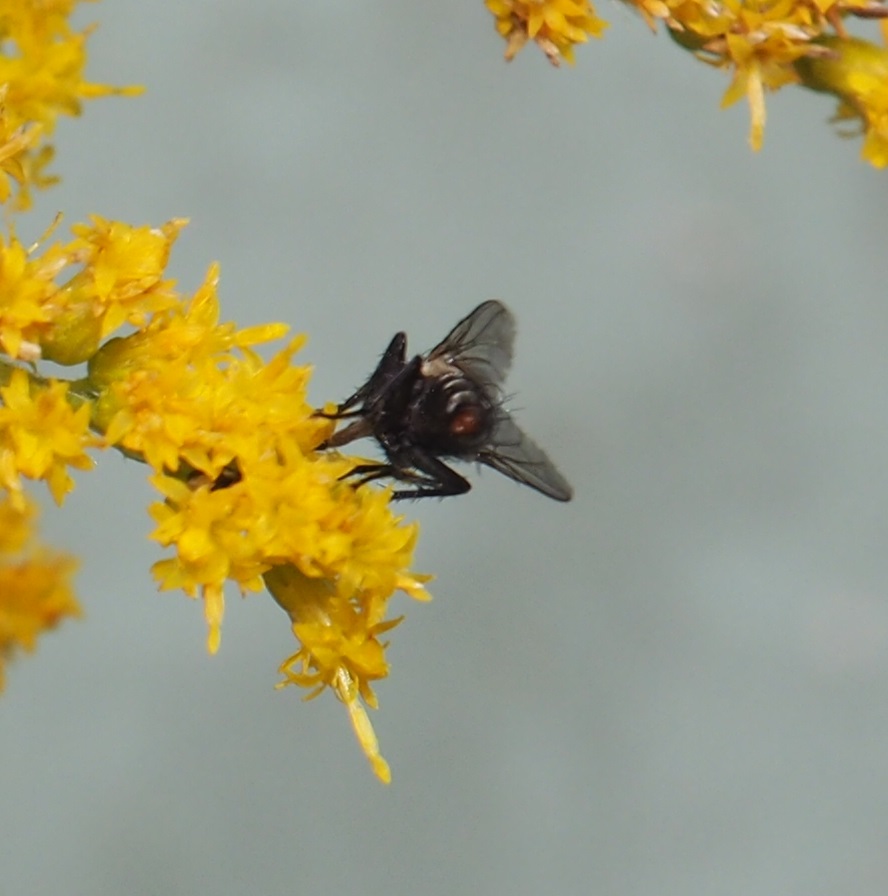
First off in this row is - gasp - a Trichopoda pennipes or Hairy-legged feather-footed fly. The very one that I had thought had done its time in this garden by September 4. Here it is on September 11! Not 11 factorial, you math nerd. But - surprise- 11. Next - Little Miss or Mister Green frog near a pink lily bud, and last we see Froggy-One Can o'Beans lending a deeply threaded into the Universe giving us some good advice: May the Farce be with you.
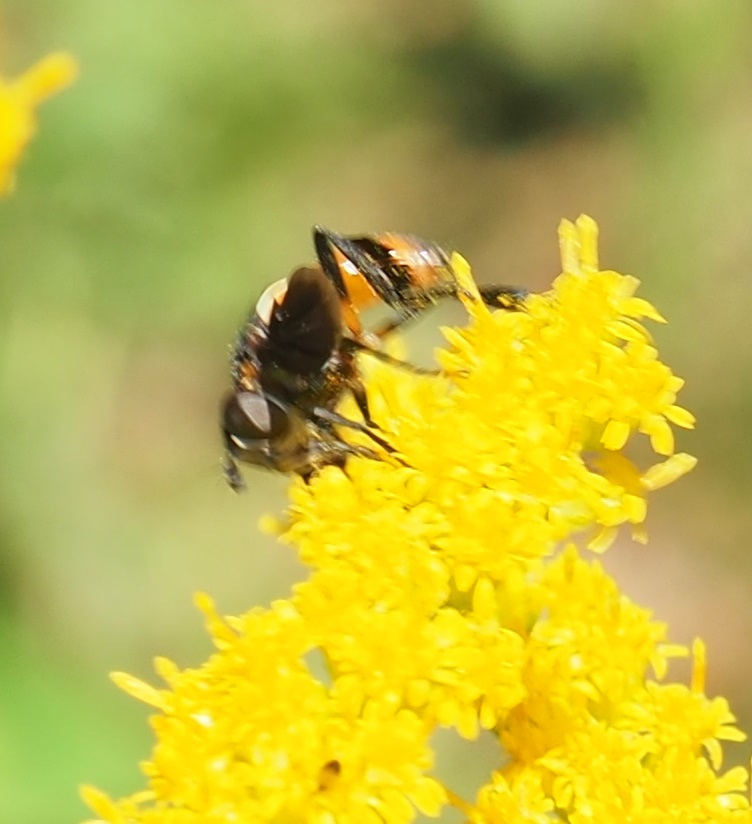
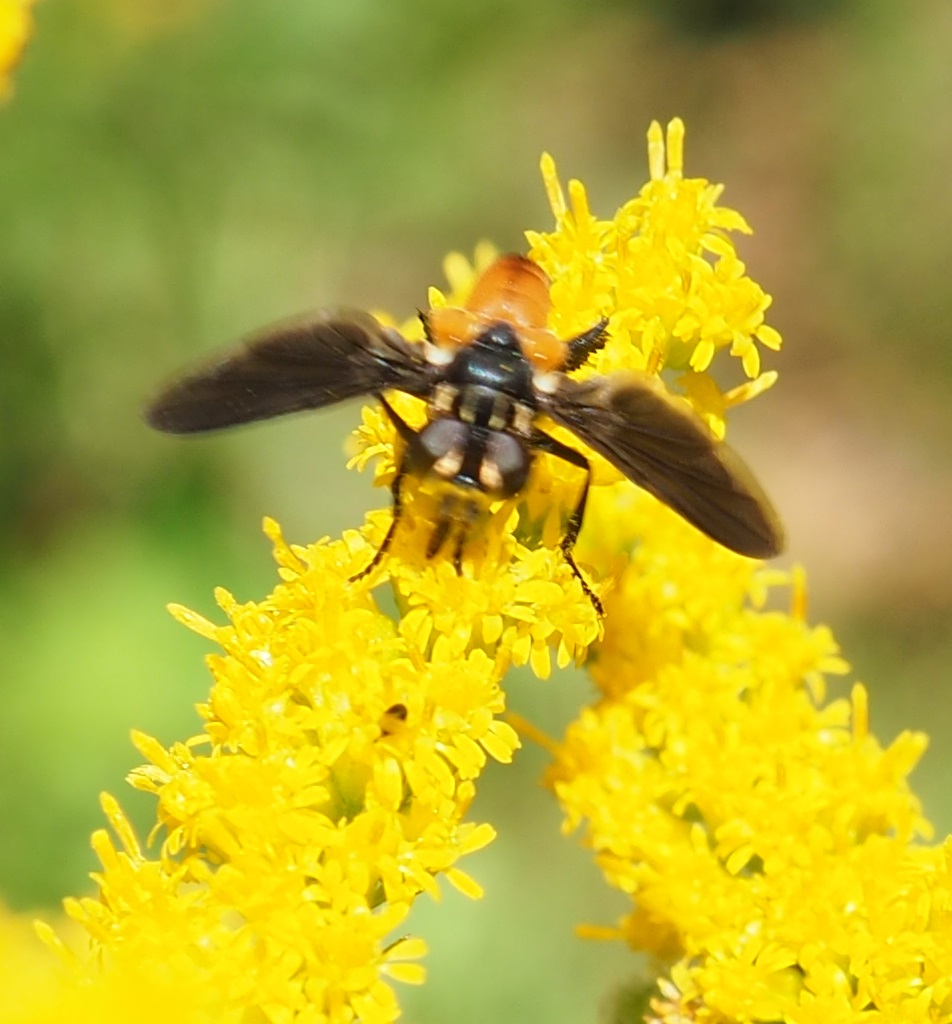

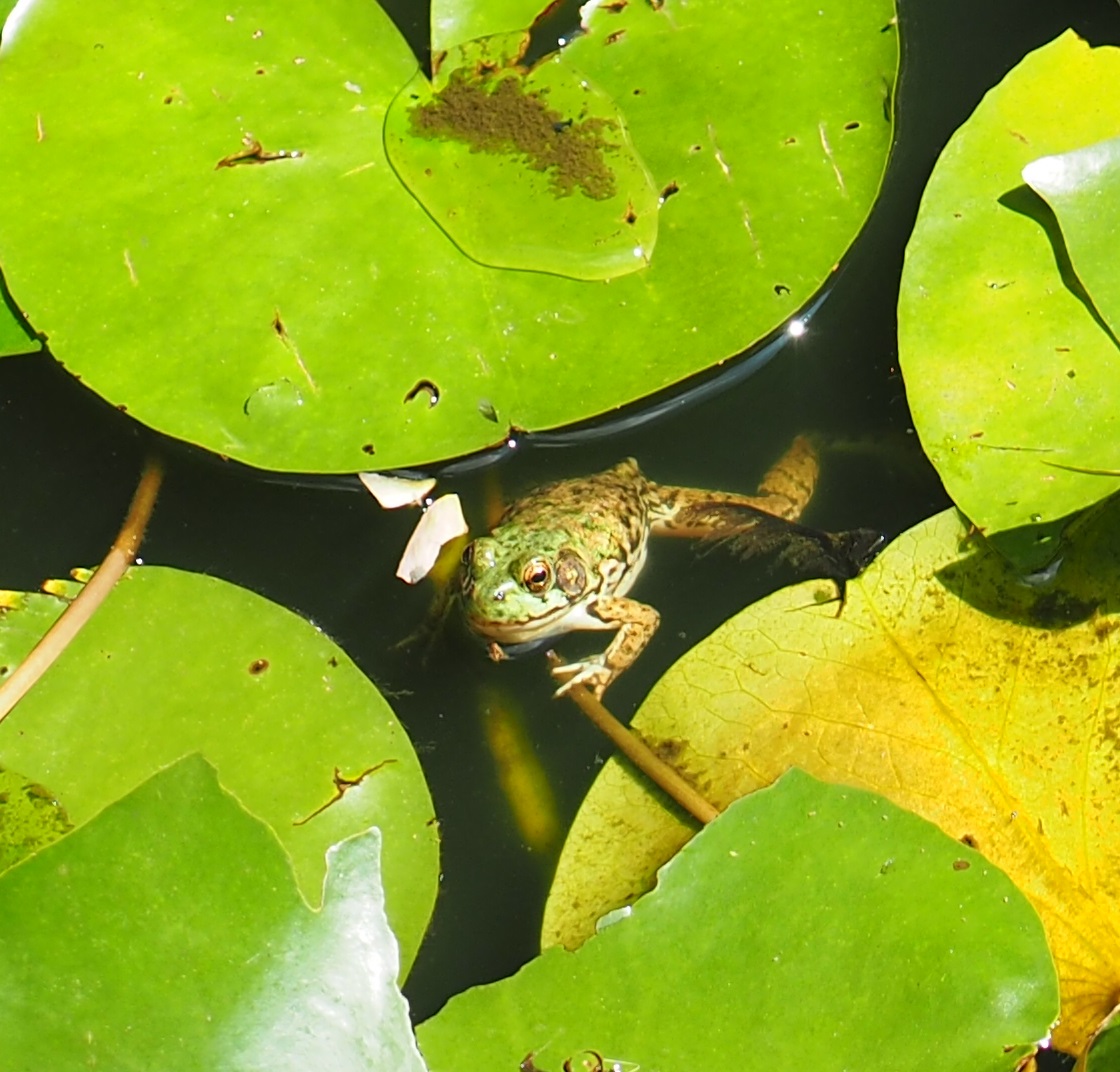
I believe the last time I saw this little nude Harvestman I really thought it was a Daddy-Long-Legs, but look again! It has TWO segments, head and rest, just like a spider with ginormous long legs. It is so NOT a Harvestman - they have but one segment. Talk about color sensibility - Here we have a greenish and striped bee in a lavender aster bloom. Third is a Mayfly getting out of a chitinous skin. And fourth is the skin left over in perfect condition.




Let's see what we have in the way of Lepidoptera - Butterflies, Moths, or Skippers. This first one is probably a Moth of some sort. Let me get out my Peterson's again after a while. The second one - ditto. Third may be a moth, though I'm not familar with the habit of dragging ones legs along. Oh gosh, that's how I got back from a fall in the weeds the other day - I had to drag my right leg along when I took a tumble. Don't worry, I now possess one of those cute little pendants that is supposed to call up someone to get me. Anyway, here we were, talking about Lepidoptera! Last is a fringed moth of some sort.

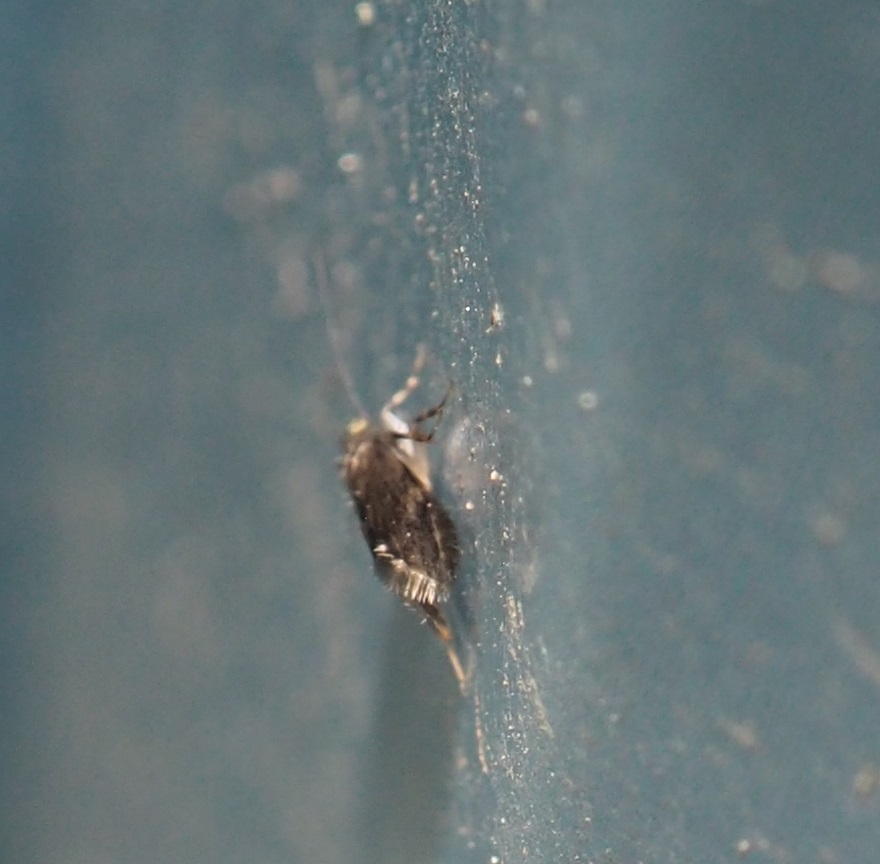
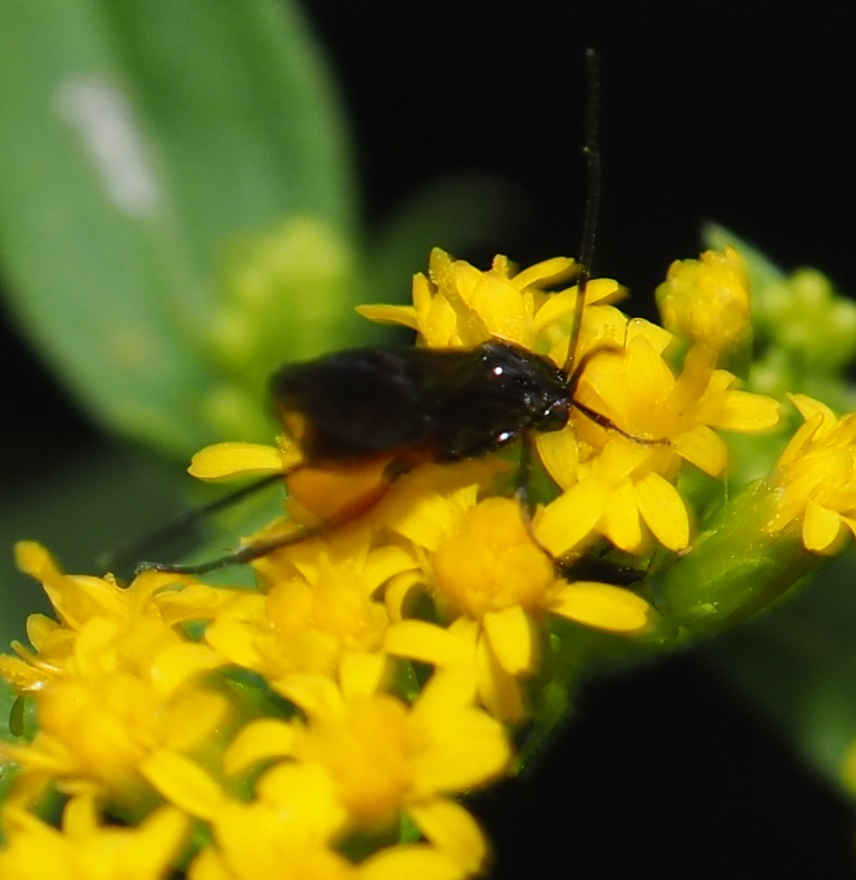
Here are two very different Butterflies: First a Cabbage White Butterfly (Pieris Rapae) on a little patch of hot pink aster blooms. And last, a huge Great Spangled Fritillary Butterfly on some paler zinnias. Sorry to say, I saw one of the common Checkered Skippers yesterday AND a pearl crescent, both of which outflew me.
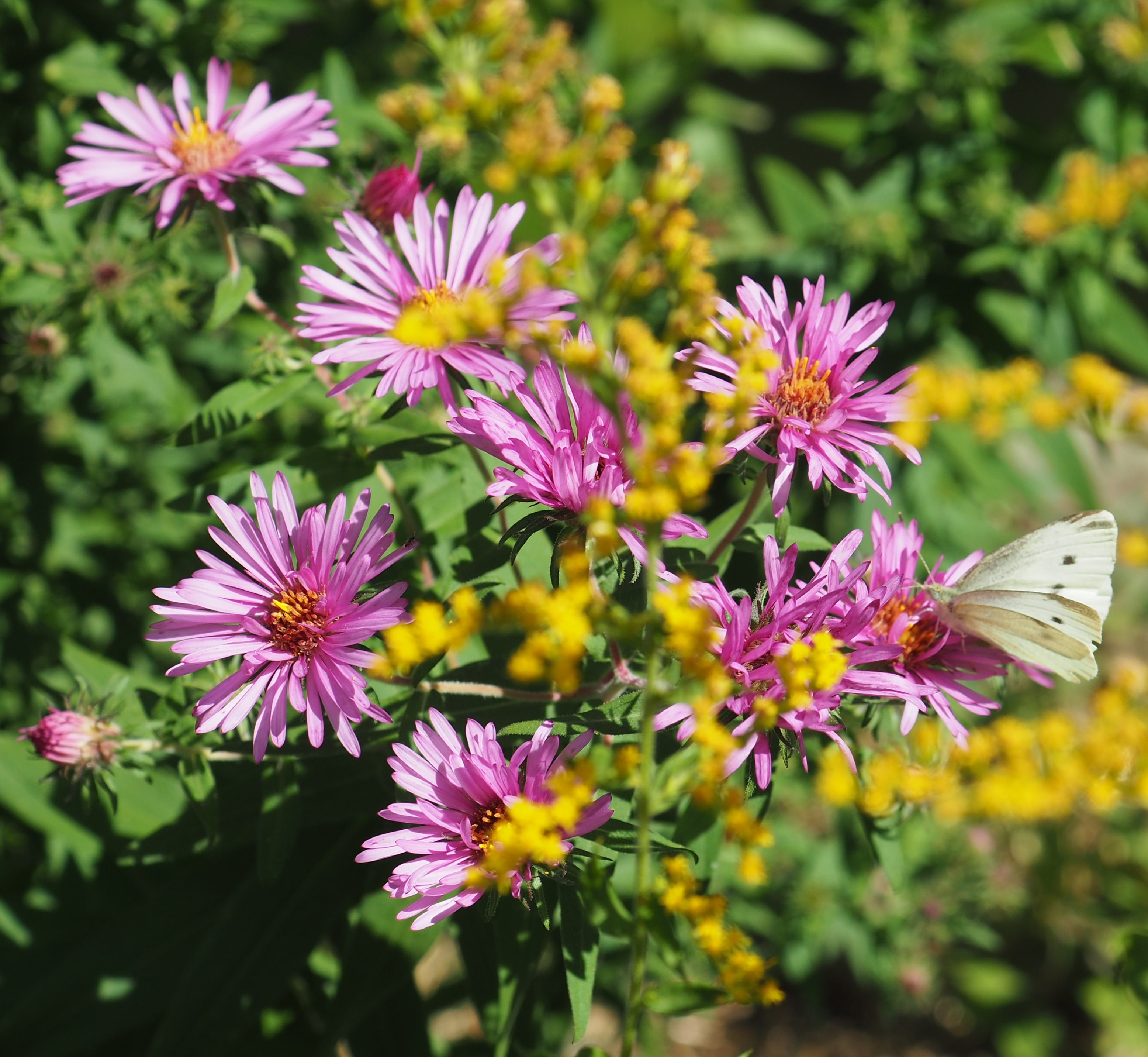
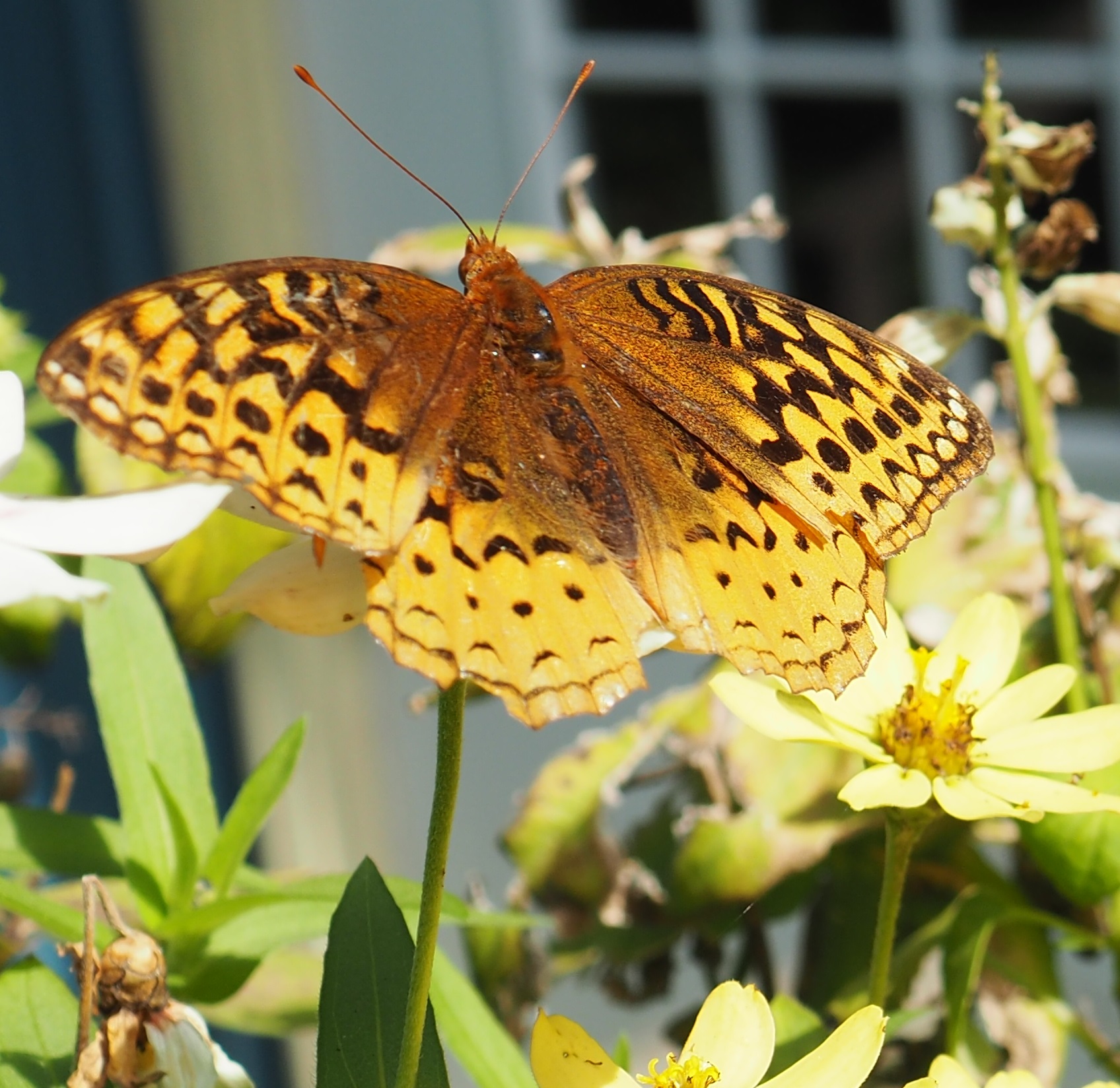
Pearl Crescent Butterfly
By far the most common spiders around at this time have been the Common House Spiders (chs) and various others, such as a few Crab Spiders and Grass Spiders. First, a couple of differently patterned and colored CHS. The third of these is stretched so you can wonder how the head stays onto that ladder between head and abdomen.

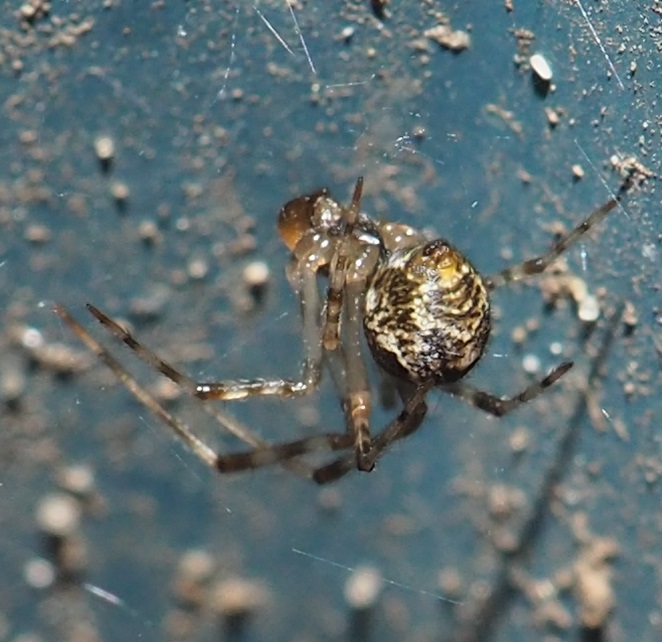
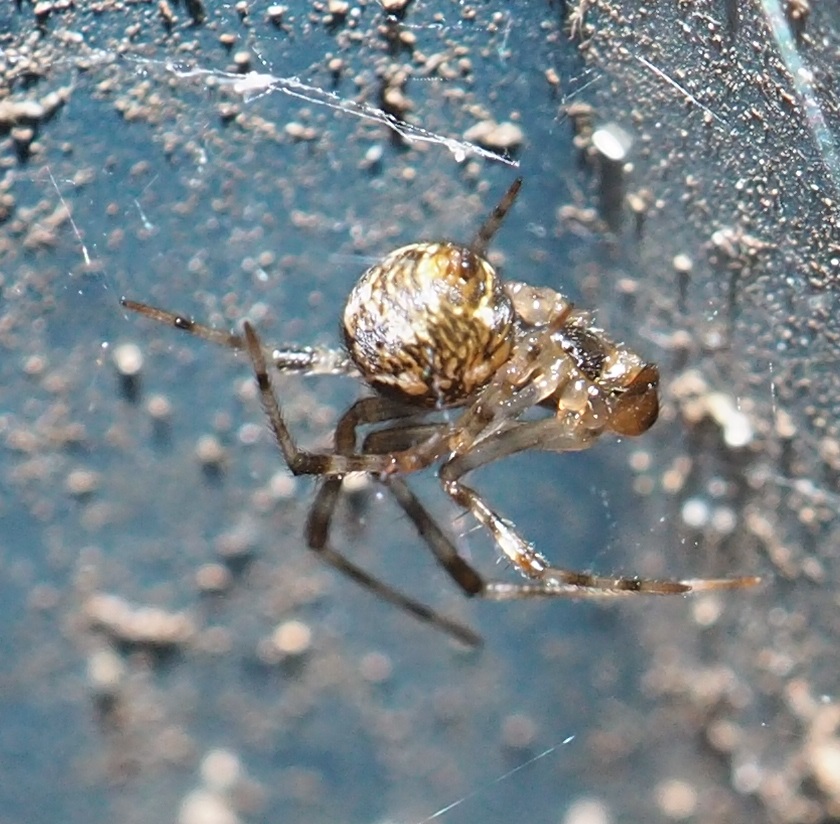
The first one is a Northern Crab Spider. They take on various colors for a simple case of camouflage. Next is a Grass Spider, which comes in a few species. But all of them make a cloudy nest, called a sheet-web. They can dash in and out to retrieve dinner items. Third is a Jumping Spider with some patterning I'm not familiar with, but it seems very chic. Fourth seems very familiar. In fact it seems to resemble a certain benevolent elephant deity but with a somewhat shortened trunk.



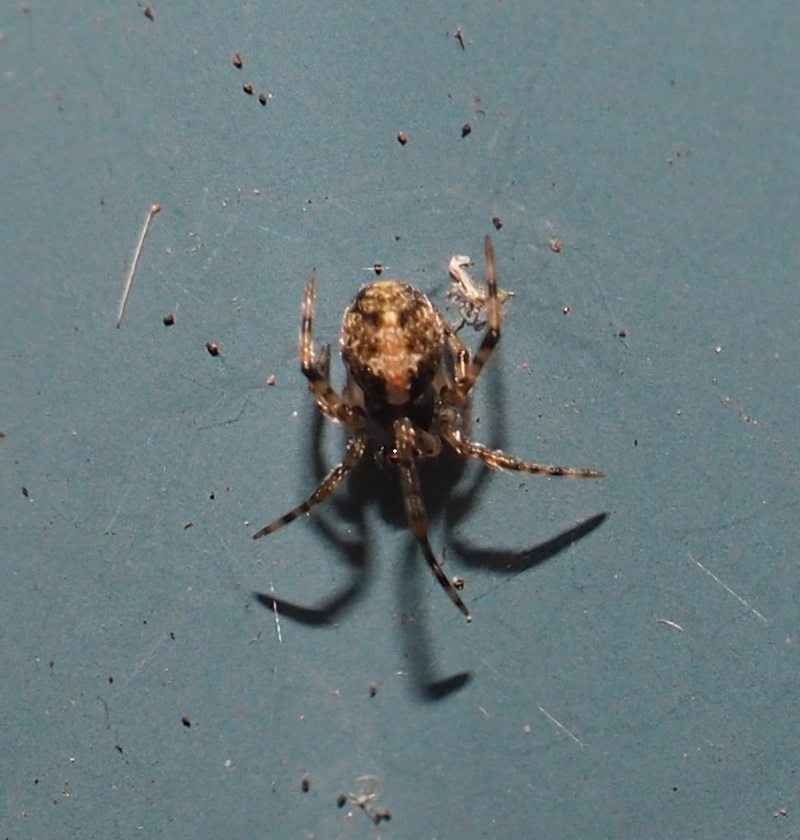
Now we get down to work on the wasps and other hymenoptera and other things that have visited this yard. There are quite a lot that we saw last summer-fall. I always forget till the new summer how much the situation repeats itself. I also always forget from one summer to the next how much smaller the captured wasps are than my memory of them. For instance, I know that the paper wasps are much larger than most of the others. I also remember now that the Ancistrocerus wasps are much smaller than the paper wasps. The next few are presented in order of decreasing size.
This first one (the most common and the largest) is a Northern Paper Wasp. Another very common wasp around here is Dolichovespula arenaria, a yellowjacket who builds its nest in trees or on buildings as opposed to most of its family, who build underground. The third on my list of frequent flyers is this pretty little thread-waisted wasp with the black coat with white markings. The comma on its "hip" says "Eumenes fraternus" and it is also very common. Next is the female Ancistrocerus - She has a little two-eyed happy face on her back. That makes me think "female" A. adiabatus. The male resembles the female but doesn't have the happy face on its back. The Ancistrocerus is quite a small wasp. Its markings are so distinct I might have thought from the photo that it was a much larger wasp.
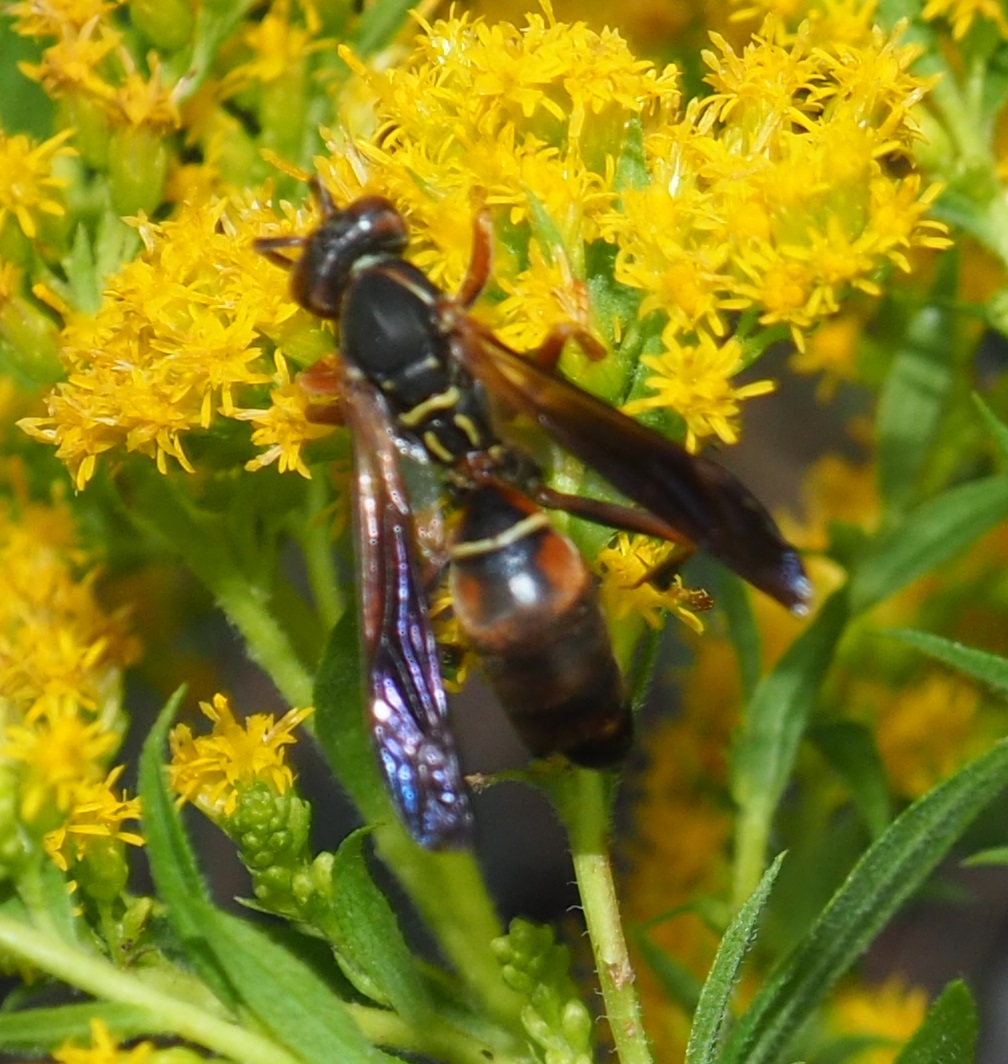
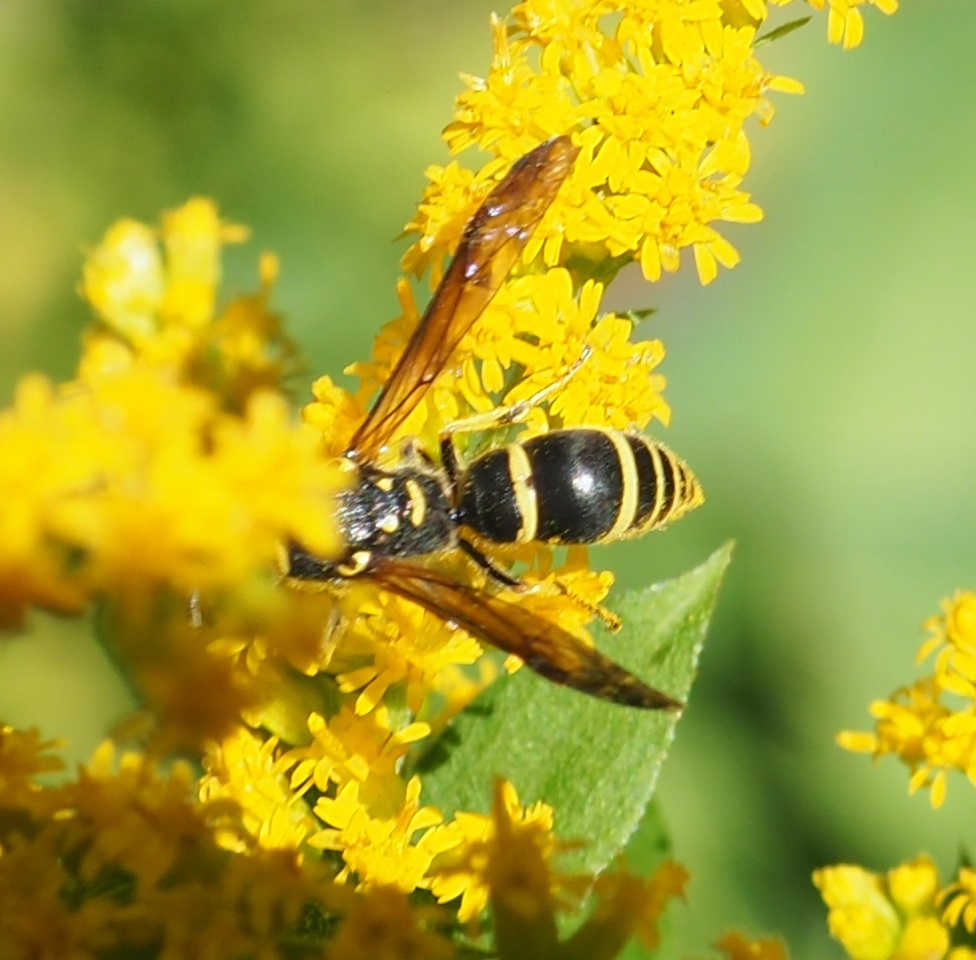
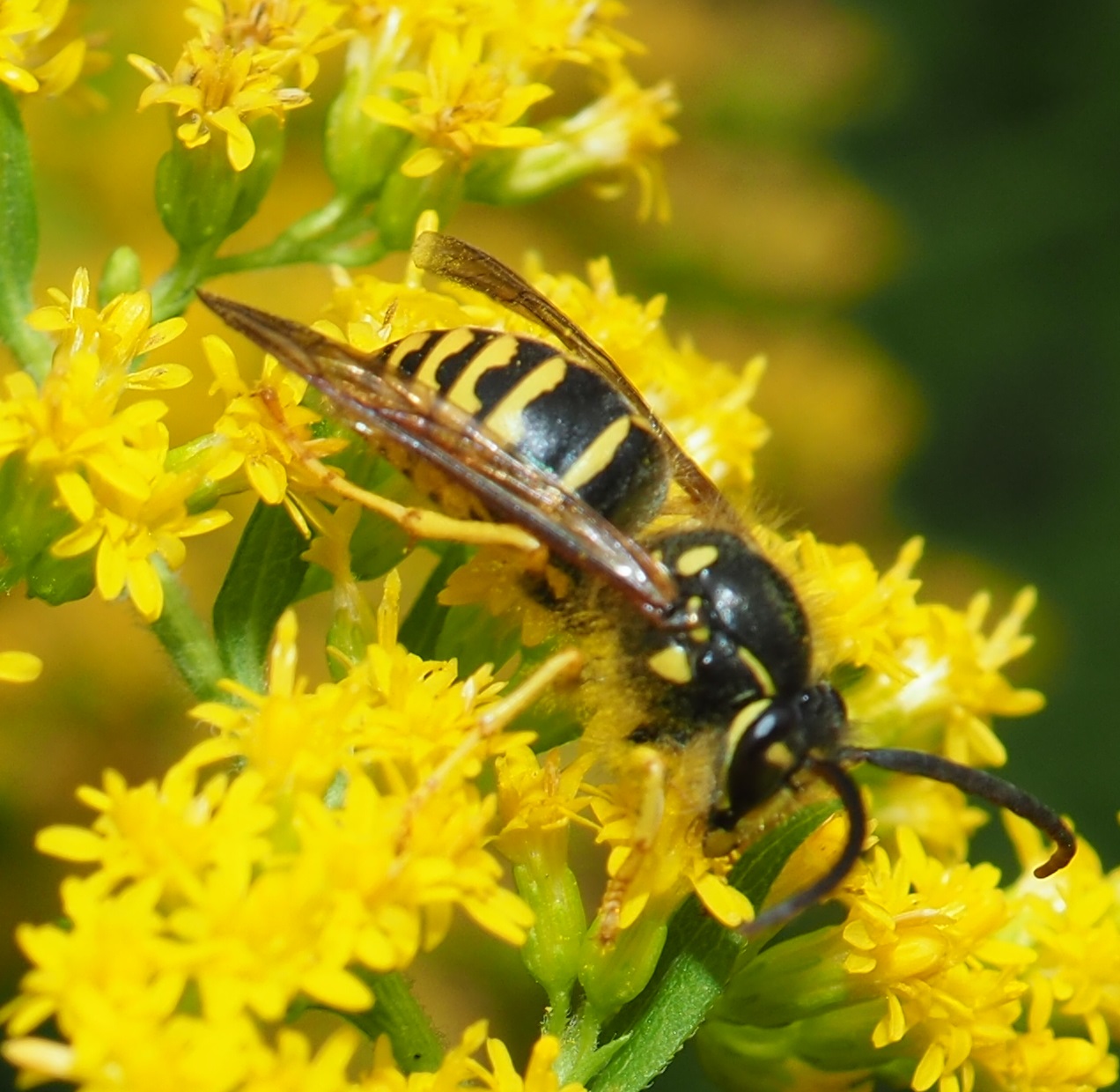
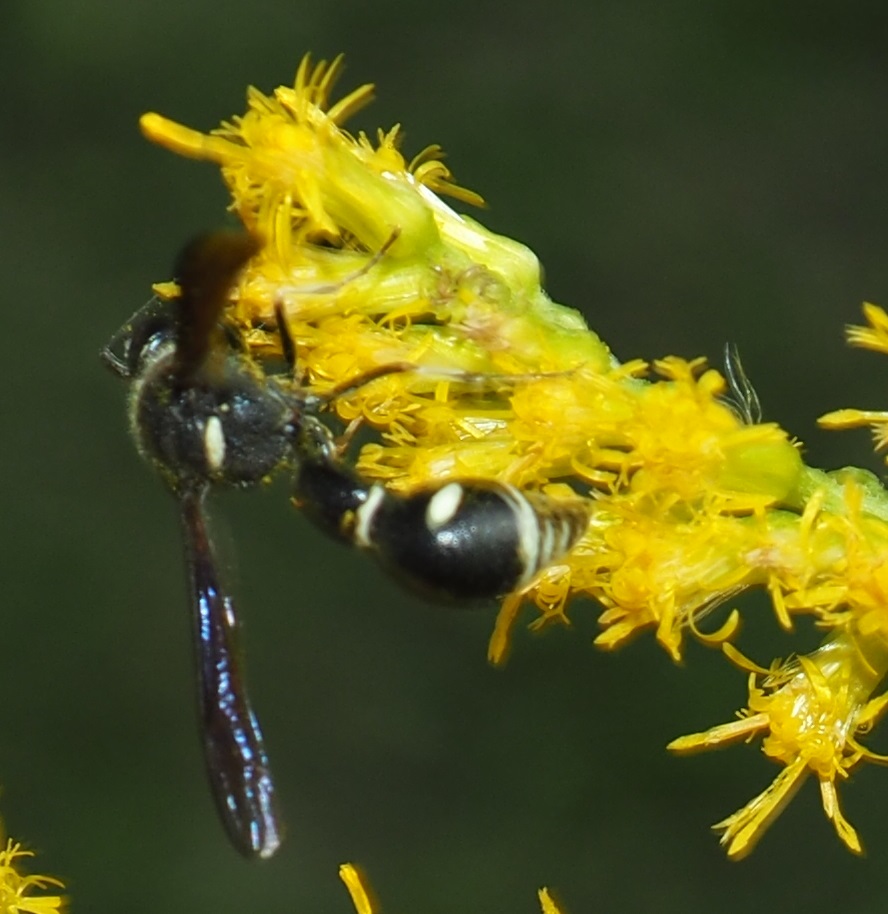
Beside E. fraternus, there are several more thread-waisted wasps. Here is one that looks kind of furry. Here is one that looks to be a very shiny bluish tone. The third one seems to be black with actual markings added in blue.
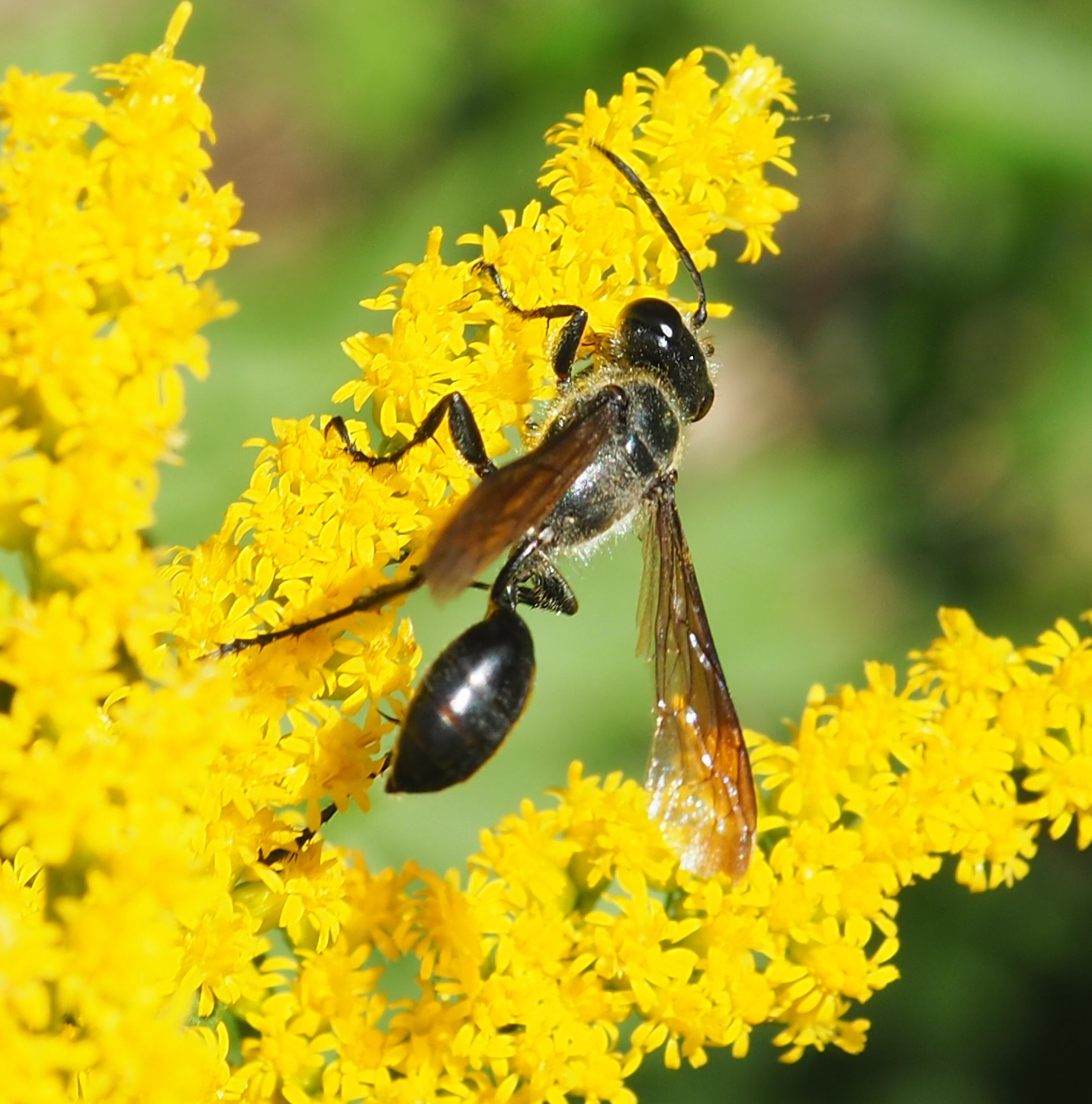
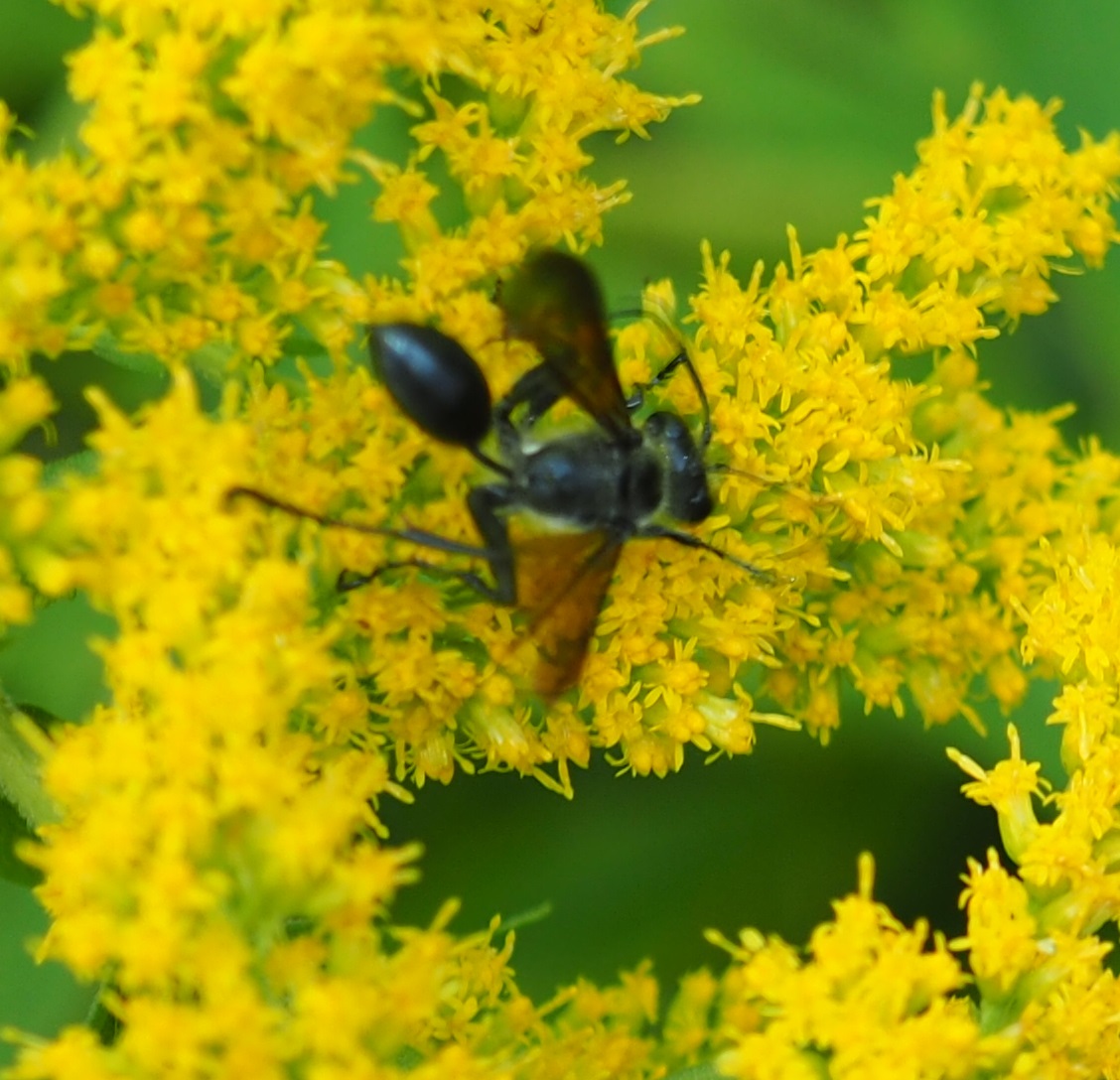
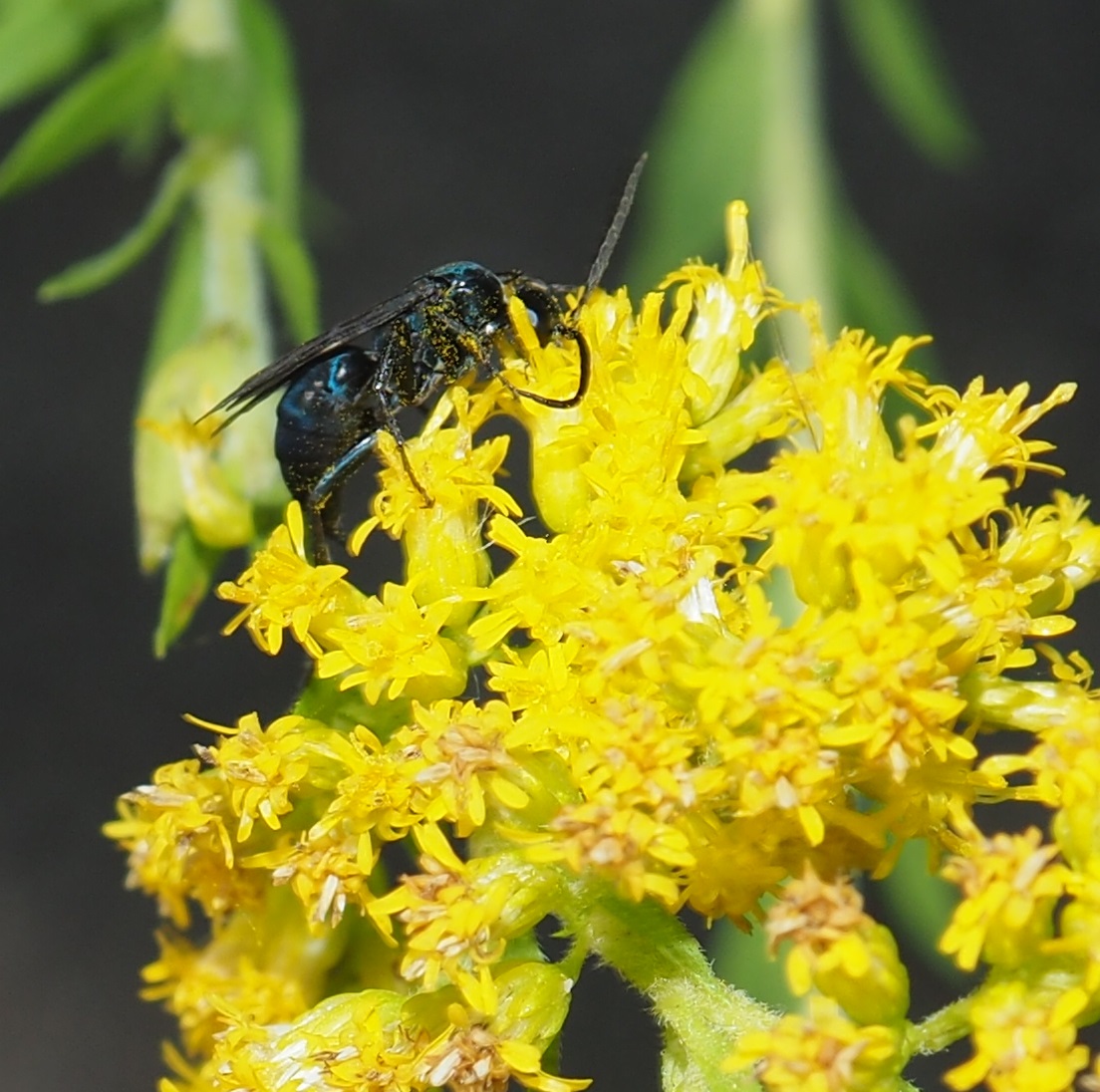
A hardish genus to identify to species is Ectemnius. The concentric rings around the abdomen may not go all the way around. Some lose the bottom halves of their "rings". Some lose the top halves. And some have the top part, then a horizontal break, and then have the bottom too.
I find this very helpful in deciding the differences.
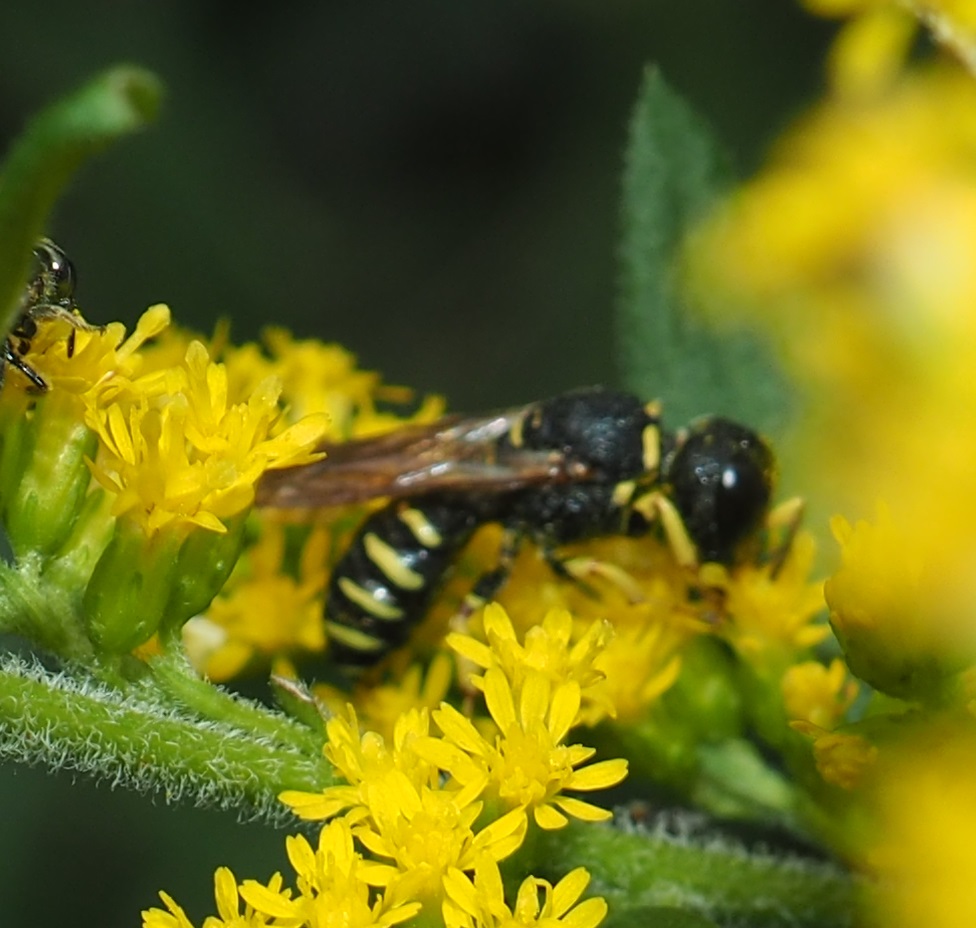
This one is unusual because of the pair of brown dots near the "waist". The second was shot 4 minutes after the first, so they aren't likely to be the same. The thing to focus on in the second is the newish face.
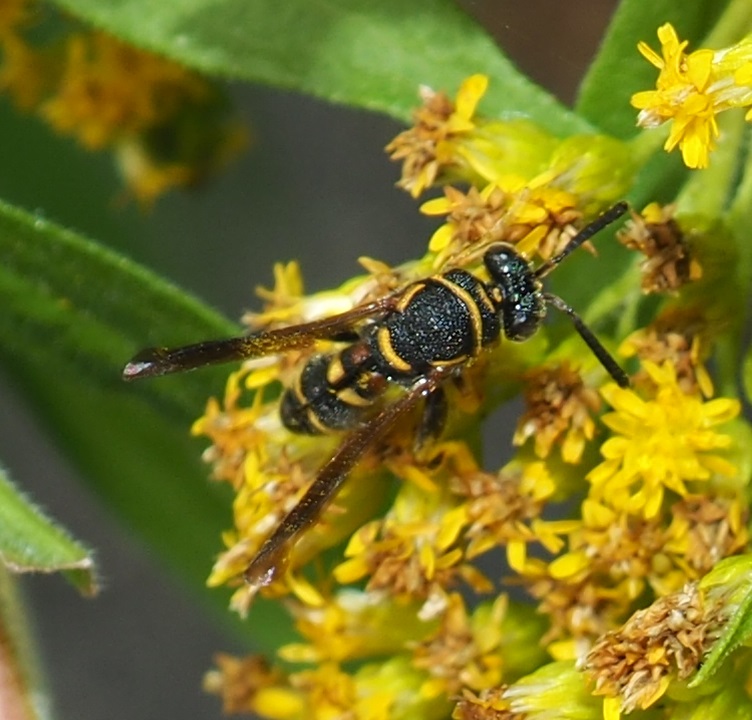
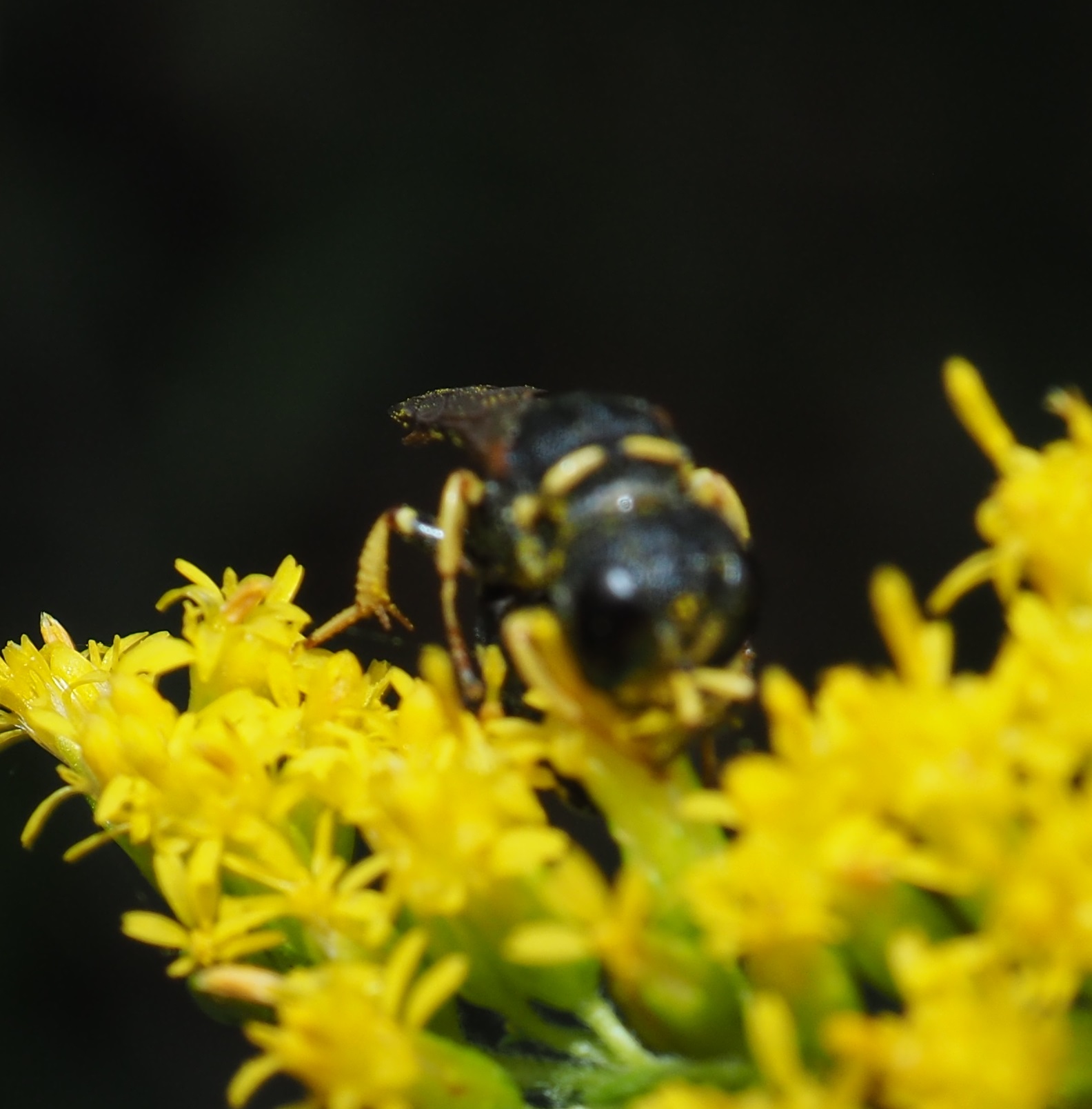
I'm going to continue working on the waspies in a separate webpage. Have to do a lot more sleuthing than time permits. I do, though, want to show you some beautiful ichneumonids or braconids, both families inside the wasp fam because of the presence of a longer or shorted ovipositor. Get ready for cheap beauty: Oh wait, this happened before. I think the fourth of these critters is not a wasp at all but maybe a Diapriid, given the elongated head and abdomen. Although I don't think I've seen a winged Diapriid before either.
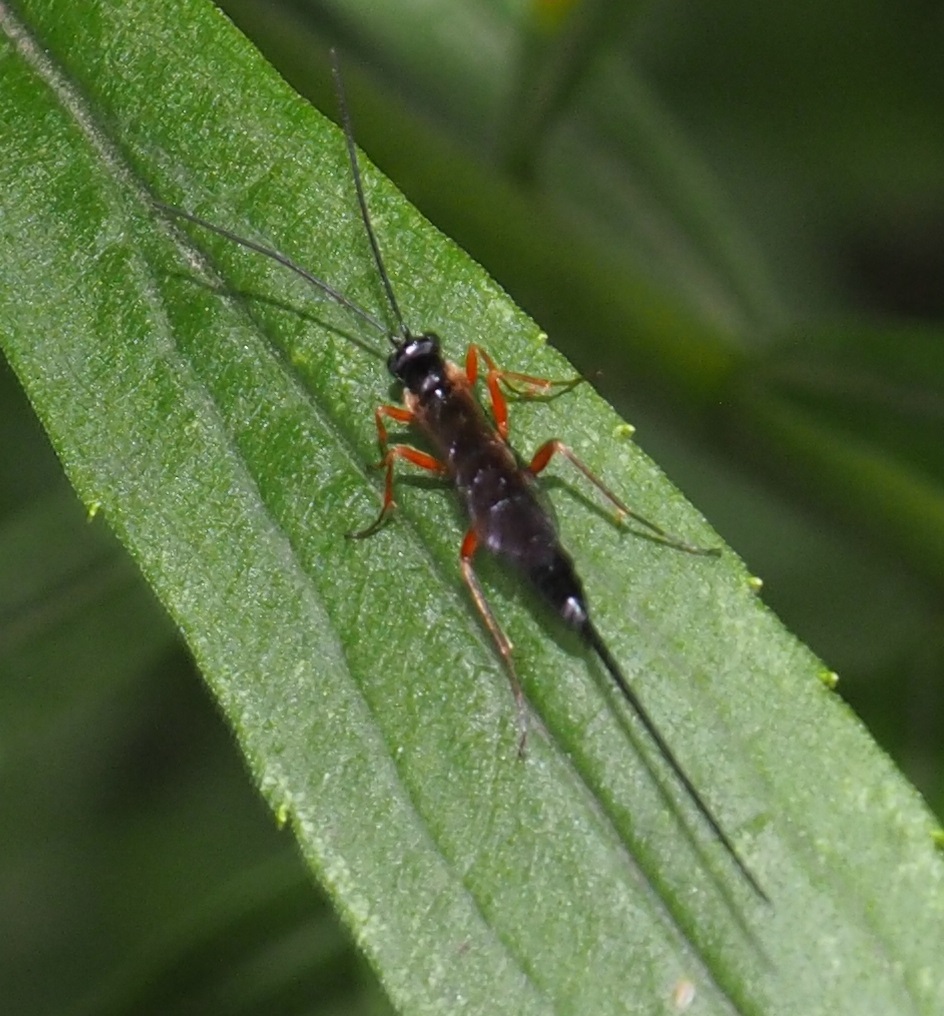



But we always have time to admire Nature's renderings.
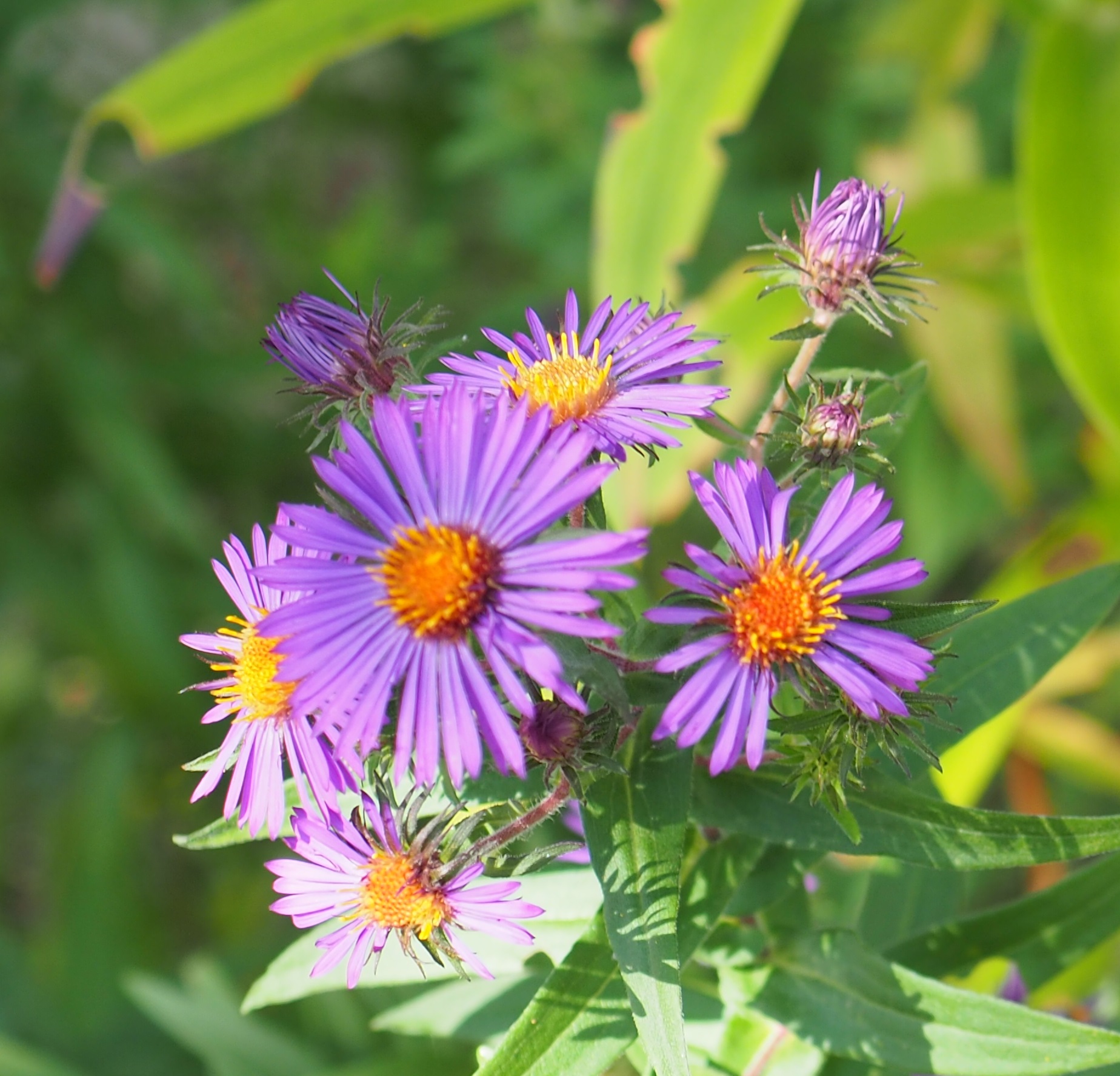



One more scene of the asters on the other side of the pond.

It's an awful problem when Nature suddenly slings you many more of her beauties than you can capture. But we'll try to make the most of her abundance. Maybe it can linger in a couple of months, when Autumn has totally taken over. Let's hope so. All, please enjoy whatever cheers you the most. See you next week!
Love to everyone,
Martha
Back to September 9, 2018
Forward to September 23, 2018
Back to main menu
copyright Martha O'Kennon 2018































 9 12 18 1a.jpg)



 Let's finally move on to see some of the fly community. The goldenrod has attracted such a crop of tiny flies I'll probably never get all the ones that come to visit.
Let's finally move on to see some of the fly community. The goldenrod has attracted such a crop of tiny flies I'll probably never get all the ones that come to visit.





















































